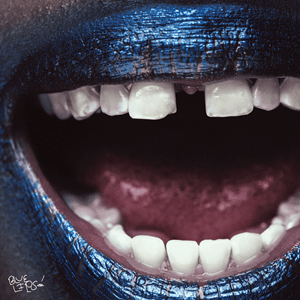Warning: Many of the reviews below contain some minor spoilers. Read at your own risk.
Reading Stats for January to June 2025
- Total Books Read: 17 (let’s gooo!!)
- Reading Mediums: 16.5 physical books, 0.5 audiobook (explanation in book review below) (can you tell I prefer to read physical books)
- Books Owned vs. Borrowed: 8.5 books owned, 2 books borrowed from friends/family, 6.5 books borrowed from library
The Seven Year Slip by Ashley Poston
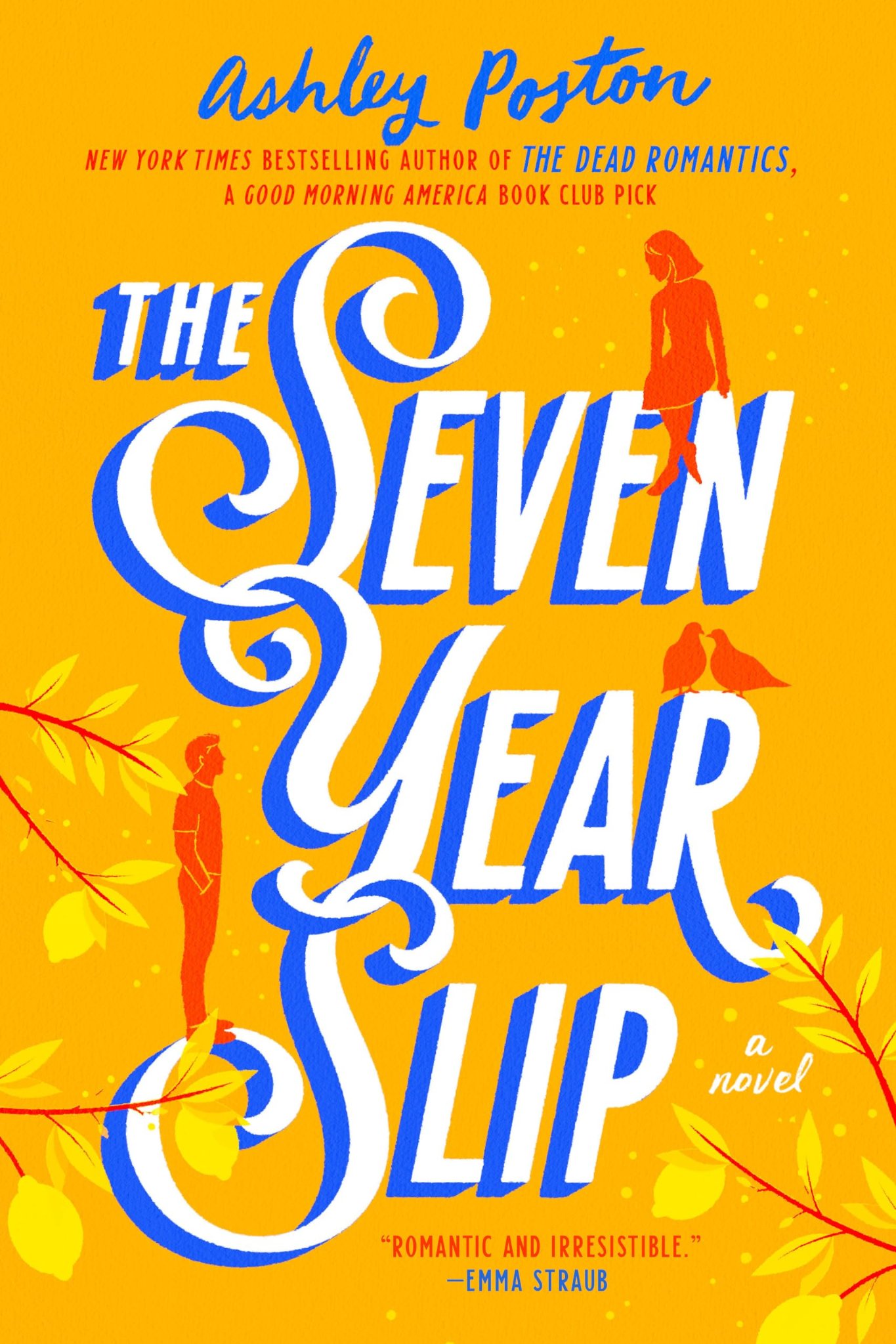
Reading Medium: Physical
Owned vs. Borrowed: Owned
Official Synopsis: Sometimes, the worst day of your life happens, and you have to figure out how to live after it.
So Clementine forms a plan to keep her heart safe: work hard, find someone decent to love, and try to remember to chase the moon. The last one is silly and obviously metaphorical, but her aunt always told her that you needed at least one big dream to keep going. And for the last year, that plan has gone off without a hitch. Mostly. The love part is hard because she doesn’t want to get too close to anyone — she isn’t sure her heart can take it.
And then she finds a strange man standing in the kitchen of her late aunt’s apartment. A man with kind eyes and a Southern drawl and a taste for lemon pies. The kind of man that, before it all, she would’ve fallen head-over-heels for. And she might again.
Except, he exists in the past. Seven years ago, to be exact. And she, quite literally, lives seven years in his future.
Her aunt always said the apartment was a pinch in time, a place where moments blended together like watercolors. And Clementine knows that if she lets her heart fall, she’ll be doomed.
After all, love is never a matter of time — but a matter of timing.
My Thoughts: I picked up this book after being recommended Ashley Poston by the ever-lovely Elisa. I ended up binge-reading all of Ashley Poston’s popular titles, and out of all the ones I read, this one quickly became my favourite.
I’m a big fan of Poston’s approach to magical realism in her stories — they feel cozy, beautifully written and heartwarming without leaning into being too unrealistic. I always love a charming, modern, magical world like this, à la Practical Magic (1998).
I loved the main characters, Clementine and Iwan. They were, in my opinion, perfectly written rom-com characters — quirky without being annoying, charming without being eye-roll-inducing, with believable chemistry between them that made me understand why they’d be into each other. And, most importantly, why they’d be friends (Reader, take note: any and every good romance can be judged by the single question — romantic feelings aside, are they good friends?).
I fell in love with Iwan right alongside Clementine, he’s like the Platonic ideal of a good rom-com’s love interest. The way they fall in love with each other despite living in different times (he’s 7 years in the past from her), and her determination as she sets out to find him in her present… god, I love romance.
Romance aside, I loved how this book wasn’t afraid to go past the surface level that a typical rom-com would skate on. The story focuses on Clementine’s journey of self-discovery first and foremost, and it does it so well. We explore her journey of self-discovery through her friendships, her passions, her mistakes, and her grief.
I think the way this book handles grief was what made it a 4.5 / 5 for me. Grief is universal. This book took me on an unexpectedly reflective and meaningful journey through the universal experience of loss, and the resilience you need to find to navigate the grief in the aftermath. Instead of encountering grief as an obstacle that is overcome once and then forever defeated, Poston explores Clementine’s grief over her aunt’s death as integral to her life story and self-discovery. It felt respectful, it felt real, I loved it.
If you’re looking for a romance that dives a bit deeper than your typical rom-com, I highly recommend this book.
My Rating: 4.5 / 5
A Novel Love Story by Ashley Poston
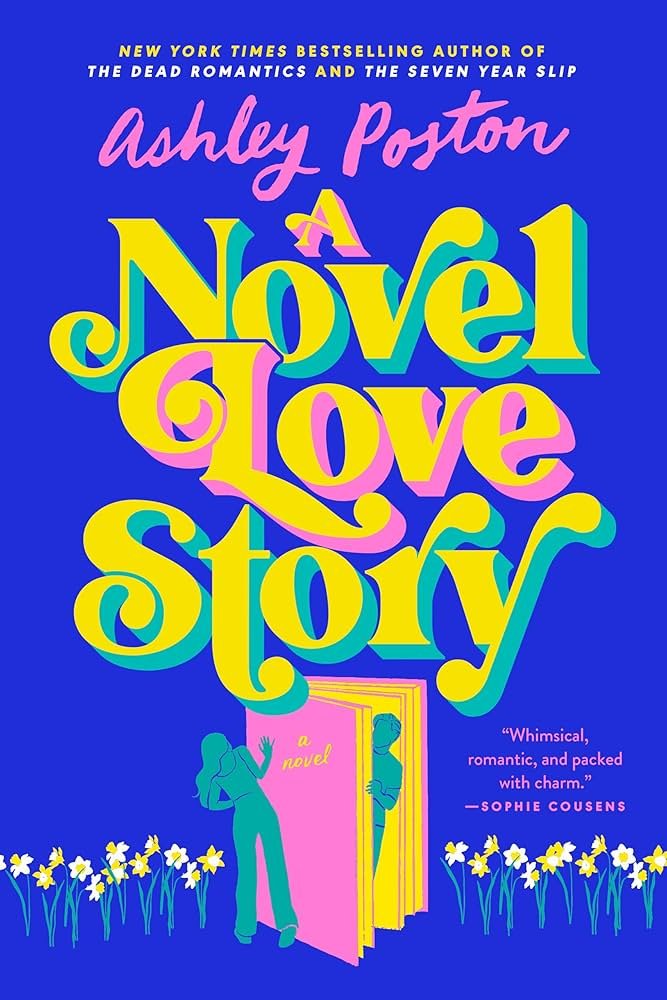
Reading Medium: Physical
Owned vs. Borrowed: Owned
Official Synopsis: Eileen Merriweather loves to get lost in a good happily-ever-after. The fictional kind, anyway. Because at least imaginary men don’t leave you at the altar. She feels safe in a book. At home. Which might be why she’s so set on going to her annual book club retreat this year — she needs good friends, cheap wine, and grand romantic gestures — no matter what.
But when her car unexpectedly breaks down on the way, she finds herself stranded in a quaint town that feels like it’s right out of a novel…
Because it is.
This place can’t be real, and yet… she’s here, in Eloraton, the town of her favorite romance series, where the candy store’s honey taffy is always sweet, the local bar’s burgers are always a little burnt, and rain always comes in the afternoon. It feels like home. It’s perfect — and perfectly frozen, trapped in the late author’s last unfinished story.
Elsy is sure that’s why she must be here: to help bring the town to its storybook ending.
Except there is a character in Eloraton that she can’t place — a grumpy bookstore owner with mint-green eyes, an irritatingly sexy mouth and impeccable taste in novels. And he does not want her finishing this book.
Which is a problem because Elsy is beginning to think the town’s happily-ever-after might just be intertwined with her own.
My Thoughts: This book was such a love letter to book lovers, I couldn’t help but smile while reading it. The way Poston writes about the joy of reading and having a love for books was ridiculously sweet and heartwarming, it just makes you want to curl up on your couch with a good book and mug of tea and honey.
Don’t get me wrong, this book is full of romance cliches. I mean, the entire plot is about a reader magically stumbling into the small town where all of her favourite romance books are set, what do you expect? But despite the cliches and cheesiness, this was just a fun read.
While this book wasn’t anything groundbreaking, it was cozy and cute and fun. What happened to having fun?!
If you’re looking to turn your brain off for a second and just enjoy romance for romance’s sake, if you’re just craving some high quality romance cheese, I recommend this book.
My Rating: 4 / 5
Crying in H Mart by Michelle Zauner
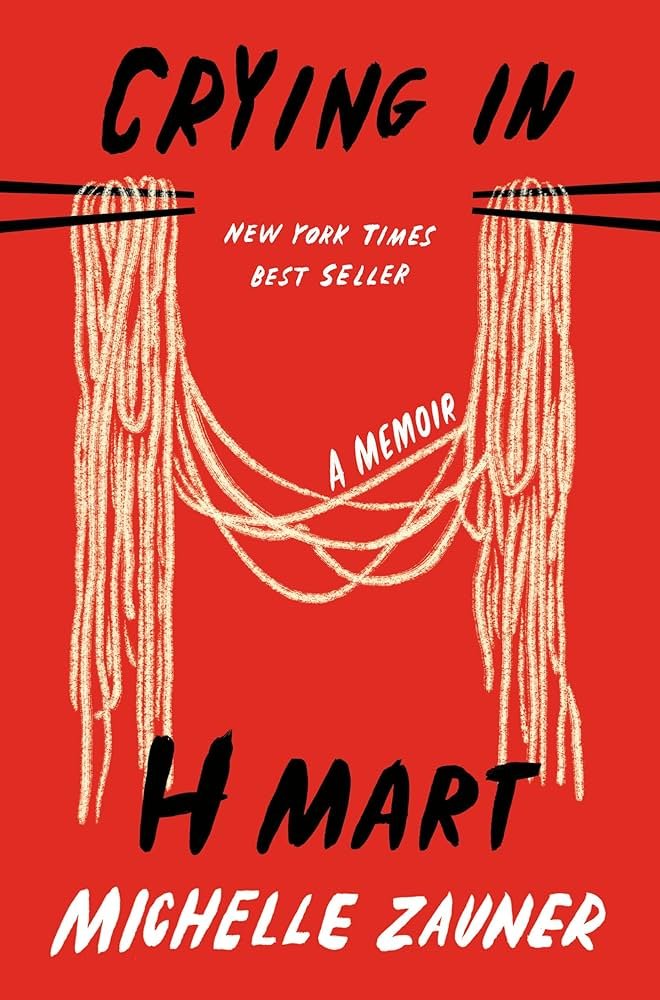
Reading Medium: Physical
Owned vs. Borrowed: Borrowed from library
Official Synopsis: The New York Times bestseller from the Grammy-nominated indie rockstar Japanese Breakfast, an unflinching, deeply moving memoir about growing up mixed-race, Korean food, losing her Korean mother, and forging her own identity in the wake of her loss.
In this exquisite story of family, food, grief, and endurance, Michelle Zauner proves herself far more than a dazzling singer, songwriter, and guitarist. With humour and heart, she tells of growing up the only Asian-American kid at her school in Eugene, Oregon; of struggling with her mother’s particular, high expectations of her; of a painful adolescence; of treasured months spent in her grandmother’s tiny apartment in Seoul, where she and her mother would bond, late at night, over heaping plates of food. As she grew up, moving to the east coast for college, finding work in the restaurant industry, performing gigs with her fledgling band — and meeting the man who would become her husband — her Koreanness began to feel ever more distant, even as she found the life she wanted to live.
It was her mother’s diagnosis of terminal pancreatic cancer, when Michelle was twenty-five, that forced a reckoning with her identity and brought her to reclaim the gifts of taste, language, and history her mother had given her.
My Thoughts: I don’t think I ever heaved a sob while reading a book, until I read this book. Good God, man.
This book is, in my opinion, the perfect memoir. Written in a way that I can only describe as “lyrical beauty”, this book broke me down. The raw emotion that Zauner is able to convey in her words truly left me in awe — the quiet devastation, the deep reflection, the sheer wisdom that grows from life experiences — good and bad. She wrote it all so beautifully.
Her reflection on growing up mixed race hit A LITTLE TOO CLOSE TO HOME! DEAR GOD! The big emotions of not feeling like you’re “enough” of either side stemming from small moments… Not understanding the language, the deep-seated embarrassment of trying to speak the language with a North American accent, not knowing parts of cultural customs because you were raised outside of it… OUCH! That hurt! A lot!
Then this book comes at you with the double whammy of also being an exploration of Zauner’s troubled relationship with her Korean mother, who died from pancreatic cancer when she was 25 years old. The exact age I was as I read this book. As if it couldn’t hit any harder.
This book takes you through the life story of Zauner and her mother’s relationship in such a vivid, haunting, beautiful way. When her mother’s cancer worsens and the roles steadily reverse as Zauner begins to take care of her mother, Zauner finds comfort in cooking traditional Korean food. I adored the journey of food in this book. Not only was the food written in such a lovely way, it encapsulated every thread of the memoir so well — traditional Korean food was how Zauner felt loved by her mother, how she would try re-connecting with her mother, and how she would try to connect with her own Korean heritage after her mother’s death.
I’m at a loss for words now. This memoir was perfect. Devastating and haunting, this book will leave you in exquisite pain and you will thank it in return. I recommend it to anyone who wants to read a memoir, or a good book in general.
Remember to call your mom.
My Rating: 5 / 5
Rules for a Knight by Ethan Hawke
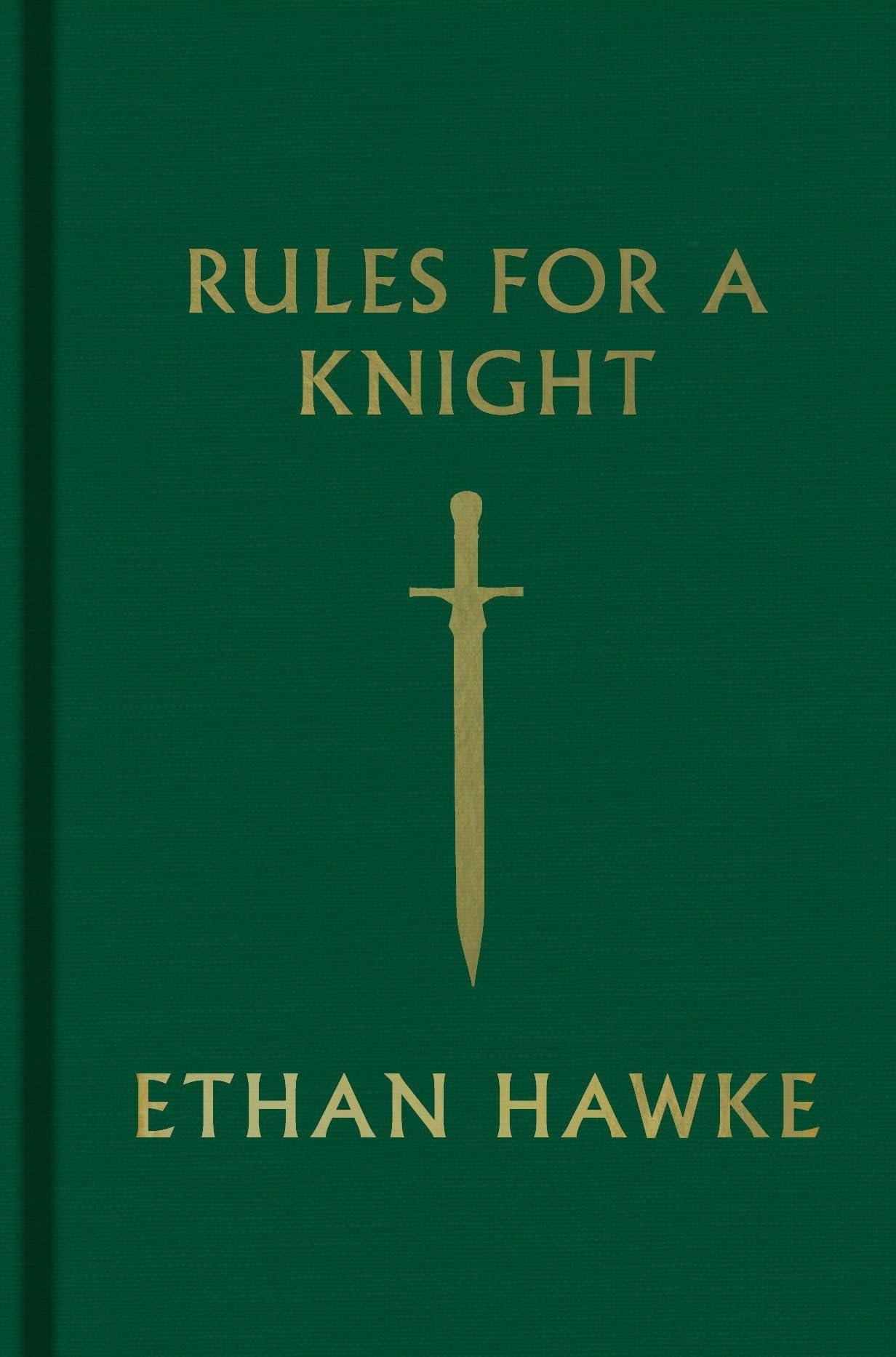
Reading Medium: Physical
Owned vs. Borrowed: Owned (Noah’s copy)
Official Synopsis: A knight, fearing he may not return from battle, writes a letter to his children in an attempt to leave a record of all he knows. In a series of ruminations on solitude, humility, forgiveness, honesty, courage, grace, pride, and patience, he draws on the ancient teachings of Eastern and Western philosophy, and on the great spiritual and political writings of our time. His intent: to give his children a compass for a journey they will have to make alone, a short guide to what gives life meaning and beauty.
My Thoughts: I needed to pick the broken pieces of myself off the ground after Michelle Zauner’s Crying in H Mart. So I picked up an old favourite book that had the added benefit of being short enough to read within an hour or so.
I first read Rules for a Knight when Noah lent me his copy back in high school. I loved it then, and I love it now.
I am in love with the book’s framing device — it is a knight writing a letter the night before a big battle, where he is almost certainly going to die. Knowing this, he writes out every life lesson he wants to pass on to his children in the form of a letter to them. It is bittersweet, Ethan Hawke’s writing style somehow perfectly conveyed the tone of a loving father not wanting to say goodbye to his children.
Each chapter is titled after a virtue that encompasses the life lesson our fictional knight wants to pass onto his children — and each lesson happens to correlate chronologically with his experiences becoming a squire then knight.
This book is just so sweet. The life lessons aren’t anything new or groundbreaking, but they’re kind reminders that I don’t mind hearing again.
If you’re looking to get out of a reading slump with a quick read, or if you are like me and just love stories about knights, I highly recommend this short read.
My Rating: 5 / 5
The Dead Romantics by Ashley Poston
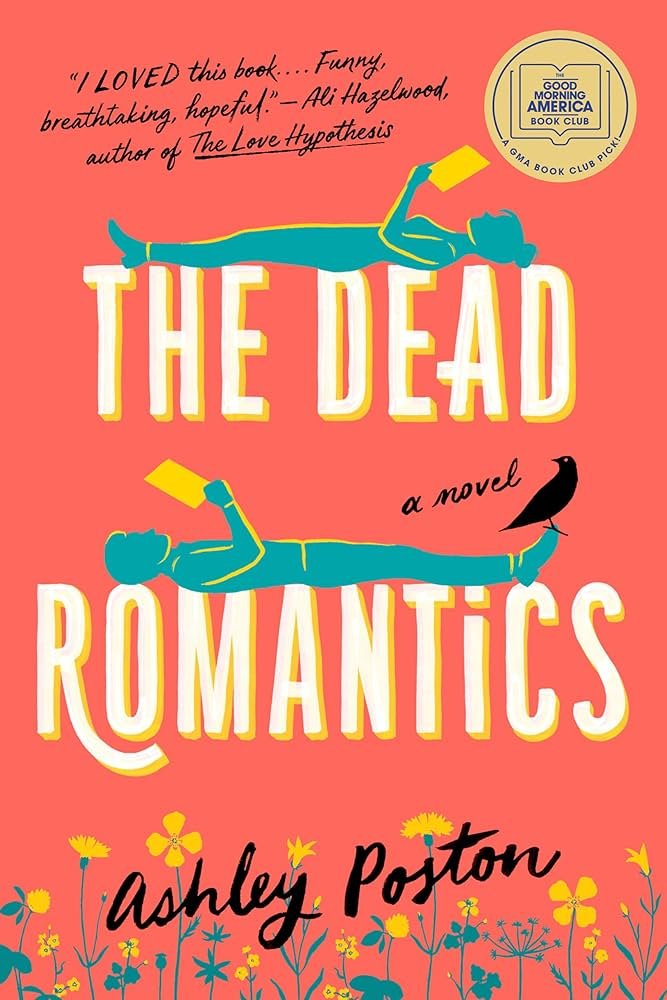
Reading Medium: Physical
Owned vs. Borrowed: Borrowed from library
Official Synopsis: Florence Day is the ghostwriter for one of the most prolific romance authors in the industry, and she has a problem — after a terrible breakup, she no longer believes in love. It’s as good as dead.
When her new editor, a too-handsome mountain of a man, won’t give her an extension on her book deadline, Florence prepares to kiss her career goodbye. But then she gets a phone call she never wanted to receive, and she must return home for the first time in a decade to help her family bury her beloved father.
For ten years, she’s run from the town that never understood her, and even though she misses the sound of a warm Southern night and her eccentric, loving family and their funeral parlor, she can’t bring herself to stay. Even with her father gone, it feels like nothing in this town has changed. And she hates it.
Until she finds a ghost standing at the funeral parlor’s front door, just as broad and infuriatingly handsome as ever, and he’s just as confused about why he’s there as she is.
Romance is most certainly dead... but so is her new editor, and his unfinished business will have her second-guessing everything she’s ever known about love stories.
My Thoughts: This book was pretty good, but I can definitely tell that this is one of Poston’s earlier books. Her writing style felt less refined, and she (much to my chagrin) used a lot of millennial slang (“doggo”, “zoom zoom juice” for coffee, etc…………….).
But putting that aside, the story was still cute. While a little predictable, I liked the main characters, and their romance was enjoyable enough to read. The premise itself is definitely this book’s biggest win — she’s a professional ghostwriter who can also talk to ghosts?! And she ends up falling in love with her new book editor… after he dies and becomes a ghost that only she can communicate with?! C’mon, that’s so fun.
Like The Seven Year Slip, this book tackles grief as Florence deals with the death of her beloved father. The grief plotline was definitely one of the more interesting parts of this book, and I can definitely see how this book’s exploration of grief was almost like a warm-up for the way Poston handles it in The Seven Year Slip. While it wasn’t bad at all, I found myself feeling not as emotionally invested as the writing style bogged it down.
This book was good; however, it didn’t capture my attention or my heart in the same way Poston’s other books did.
My Rating: 3 / 5
Love, Theoretically by Ali Hazelwood
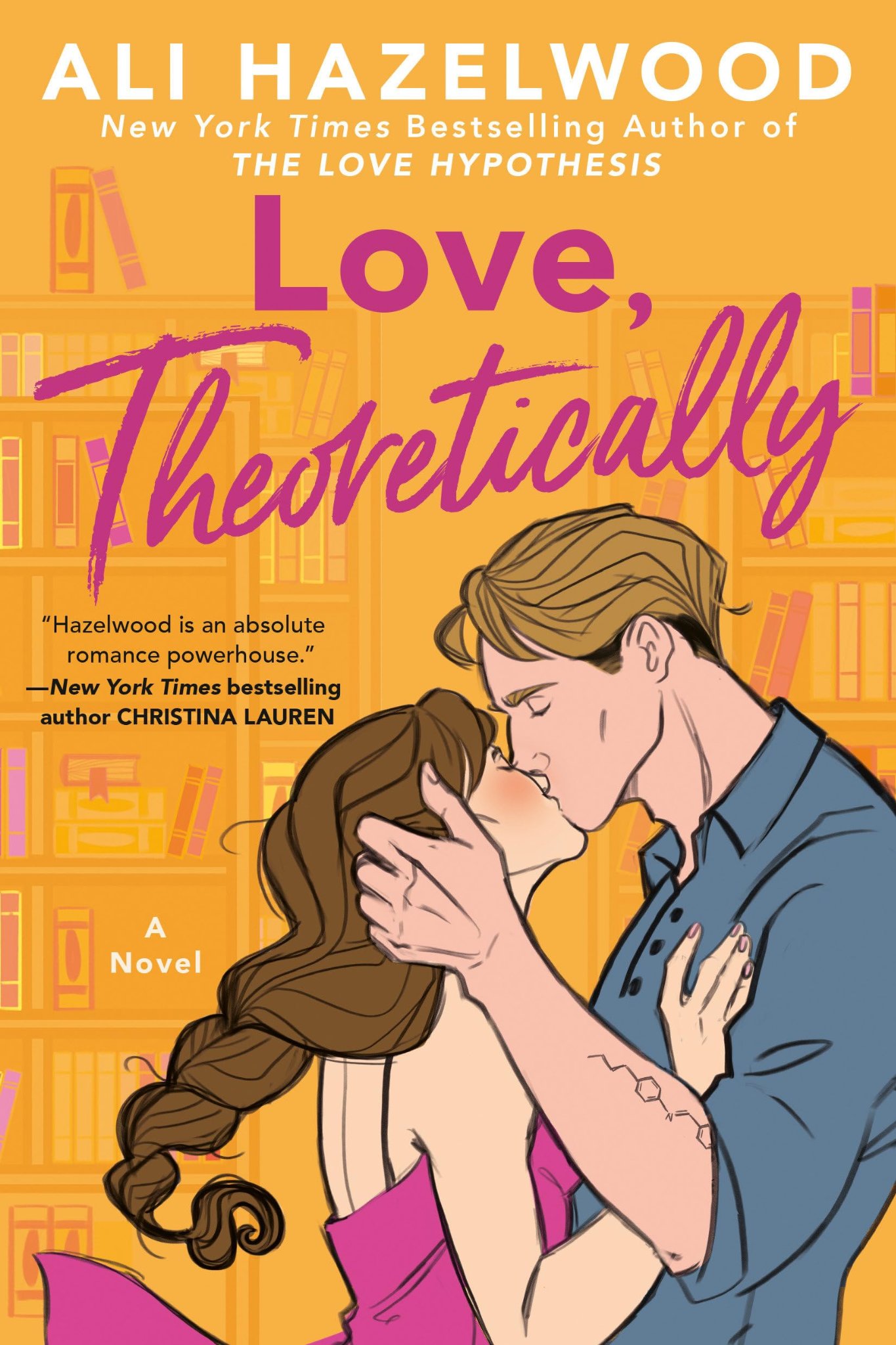
Reading Medium: Physical
Owned vs. Borrowed: Borrowed from library
Official Synopsis: The many lives of theoretical physicist Elsie Hannaway have finally caught up with her. By day, she’s an adjunct professor, toiling away at grading labs and teaching thermodynamics in the hopes of landing tenure. By other day, Elsie makes up for her non-existent paycheck by offering her services as a fake girlfriend, tapping into her expertly honed people pleasing skills to embody whichever version of herself the client needs.
Honestly, it’s a pretty sweet gig — until her carefully constructed Elsie-verse comes crashing down. Because Jack Smith, the annoyingly attractive and broody older brother of her favorite client, turns out to be the cold-hearted experimental physicist who ruined her mentor’s career and undermined the reputation of theorists everywhere. And that same Jack who now sits on the hiring committee at MIT, right between Elsie and her dream job.
Elsie is prepared for an all-out war of scholarly sabotage but…those long, penetrating looks? Not having to be anything other than her true self when she’s with him? Will falling into an experimentalist’s orbit finally tempt her to put her most guarded theories on love into practice?
My Thoughts: Well, well, well. Ali Hazelwood, we meet again!
Reader, you may remember from my previous Reading Round-Up my supposed beef with Ali Hazelwood. Well, you may be shocked (yet pleased?) to hear that I’m… just kinda okay with Ali Hazelwood now. Yeah, her writing isn’t anything to write home about, but I will give her this — her writing style is addictive. Her stuff is like romance crack cocaine: It’s not that good for you, but it’ll give you a pretty good high for a minute there, and it’s extremely easy to quickly consume.
While Ali Hazelwood may not be the best romance writer out there, I dare say she may be improving with all of these books she’s churning out. I didn’t totally hate this book like I have with many of her other books. Did I like it? Meh, it was okay.
This book in particular (allegedly one of her best, according to her fans) was just okay. The romance was okay, the characters were okay, the plot was predictable but okay. Just very… okay.
Didn’t love it, didn’t hate it, don’t think I’d recommend it.
My Rating: 2 / 5
Hornblower and the Atropos by C.S. Forester
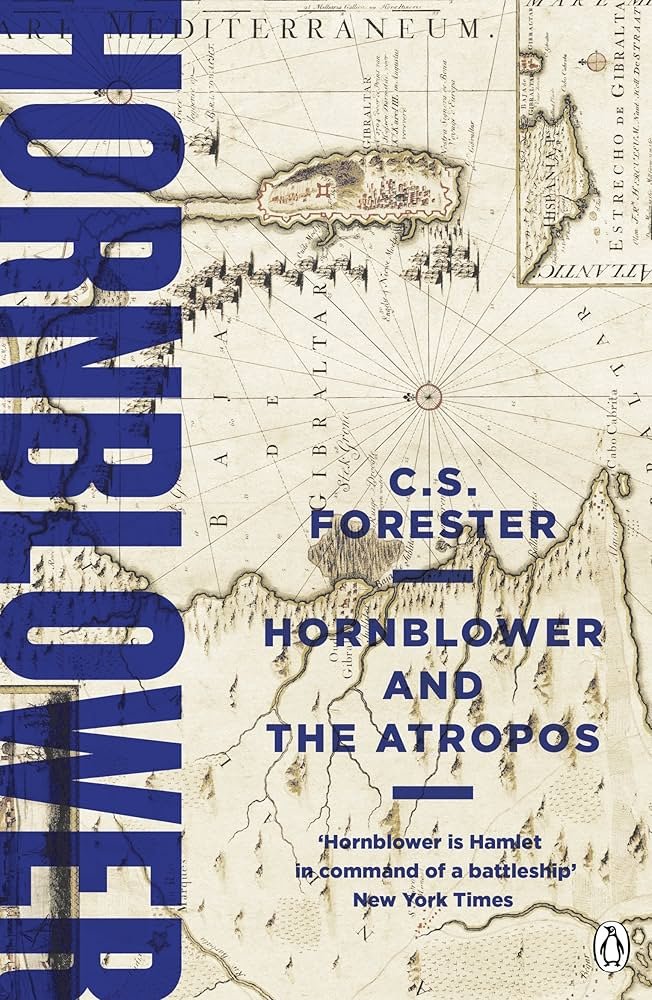
Reading Medium: Half physical, half audiobook
Owned vs. Borrowed: Owned physical copy, borrowed audiobook from library
Official Synopsis: In the wake of a humbling incident aboard a canal boat in the Cotswolds, young Captain Horatio Hornblower arrives in London to take command of the Atropos, a 22-gun sloop barely large enough to require a captain. Her first assignment under Hornblower's command is as flagship for the funeral procession of Lord Nelson.
Soon Atropos is part of the Mediterranean Fleet's harassment of Napoleon, recovering treasure that lies deep in Turkish waters and boldly challenging a Spanish frigate several times her size. At the center of each adventure is Hornblower, Forester's most inspired creation, whose blend of cautious preparation and spirited execution dazzles friend and foe alike.
My Thoughts: I was pleasantly surprised by Hornblower! After receiving my copy from Bennet during our book club’s White Elephant book exchange, I was eager to read it as I’ve always been a fan of historical fiction revolving around life on the sea – pirates, navy officers, etc.
The action is fun and well-written, and outside of the action, I enjoyed reading the small details of Hornblower’s life as he moves his family to London and accepts the command of the Atropos.
The pacing is pretty slow at many points in the book, however, and I found myself feeling like I was waiting for more to happen. I switched to listening to my library’s audiobook version in order to finish the book in time for our book club’s meeting, and I do think listening to the narration (at 1.5x speed, forgive me anti-audiobookers) helped me finish the book on a higher note.
And yes, I did rate this book ever so slightly higher than Dune (3 / 5).
My Rating: 3.5 / 5
Wildfire by Hannah Grace
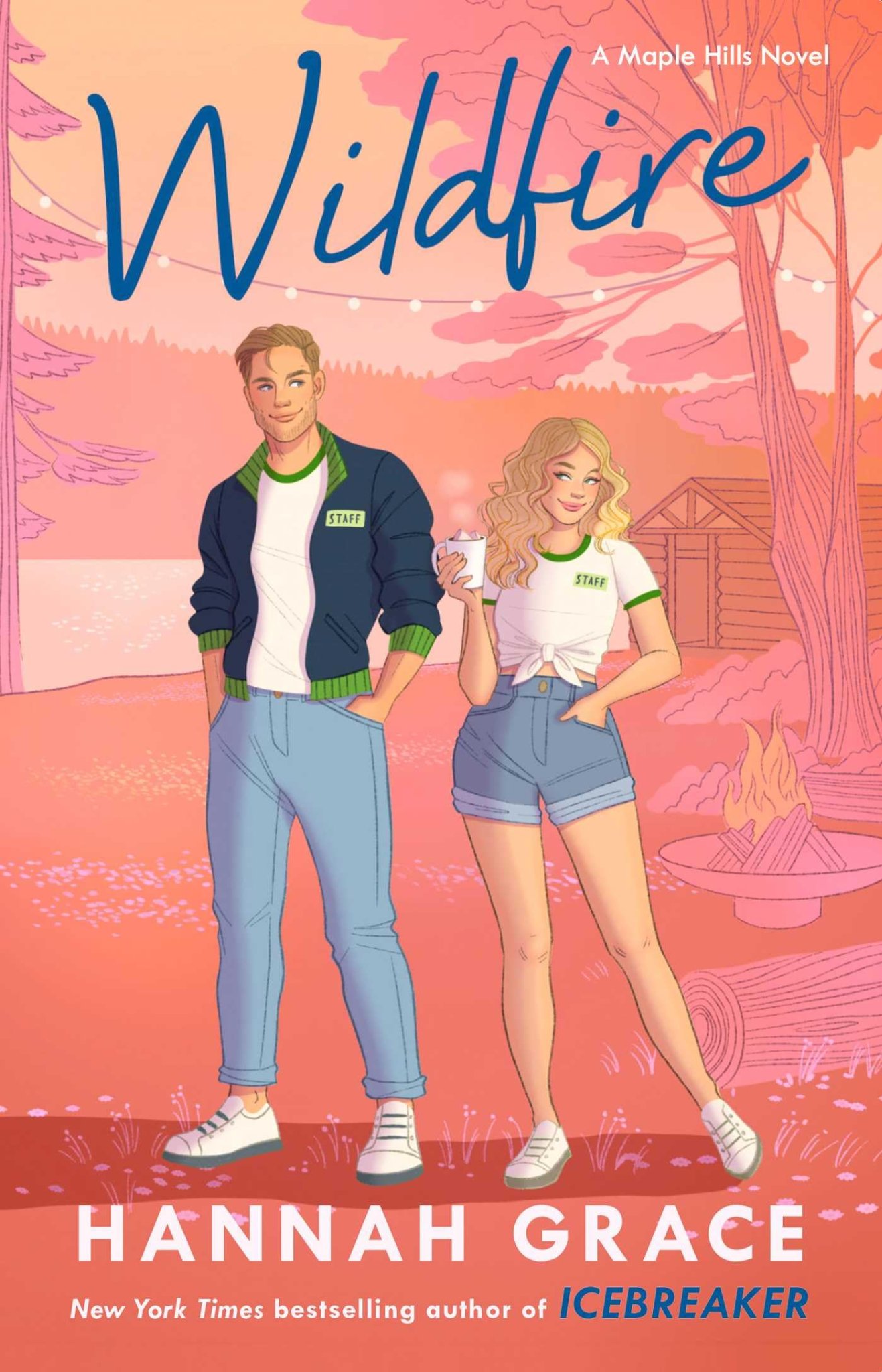
Reading Medium: Physical
Owned vs. Borrowed: Borrowed from library
Official Synopsis: Maple Hills students Russ Callaghan and Aurora Roberts cross paths at a party celebrating the end of the academic year, where a drinking game results in them having a passionate one-night stand. Never one to overstay her welcome (or expect much from a man), Aurora slips away before Russ even has the chance to ask for her full name.
Imagine their surprise when they bump into each other on the first day of the summer camp where they are both counselors, hoping to escape their complicated home lives by spending the summer working. Russ hopes if he gets far enough away from Maple Hills, he can avoid dealing with the repercussions of his father’s gambling addiction, while Aurora is tired of craving attention from everyone around her, and wants to go back to the last place she truly felt at home.
Russ knows breaking the camp’s strict “no staff fraternizing” rule will have him heading back to Maple Hills before the summer is over, but unfortunately for him, Aurora has never been very good at caring about the rules. Will the two learn to peacefully coexist? Or did their one night together start a fire they can’t put out?
My Thoughts: Hannah Grace, author of Icebreaker… We meet again!
When I found out that Hannah Grace was expanding the Icebreaker universe by writing more romance books about every single secondary character’s love stories, my inner hater rejoiced. However, it was like the romance gods (Aphrodite?) were looking out for me and my sanity.
I was relieved to find that I did not hate this book as much as I hated Icebreaker. Was it a good romance book? No, not really. Did every character piss me off as they went through an infuriating and nonsensical plot? Thankfully, no.
I’ll give Hannah Grace some kudos here — I feel like she read her hate comments and roast reviews and actually took some as constructive criticism. Her characters in this book were FAR less infuriating than the main characters of Icebreaker — they were just kind of dumb at times, and that I can live with.
The plot was lackluster and predictable, but not infuriating! Wow! I appreciated Hannah Grace’s obvious effort to give her characters more emotional depth and a deeper chemistry than Icebreaker ’s eye-roll-inducing lack of chemistry. It wasn’t done super well, but I appreciated that the main characters actually took some time on the page to talk about their feelings and talk through their problems instead of just bonin’.
How I feel about this book is equivalent to a teacher seeing a straight-F kid finally get a D-. Not perfect, far from it, but it’s a start.
My Rating: 2 / 5
Daydream by Hannah Grace
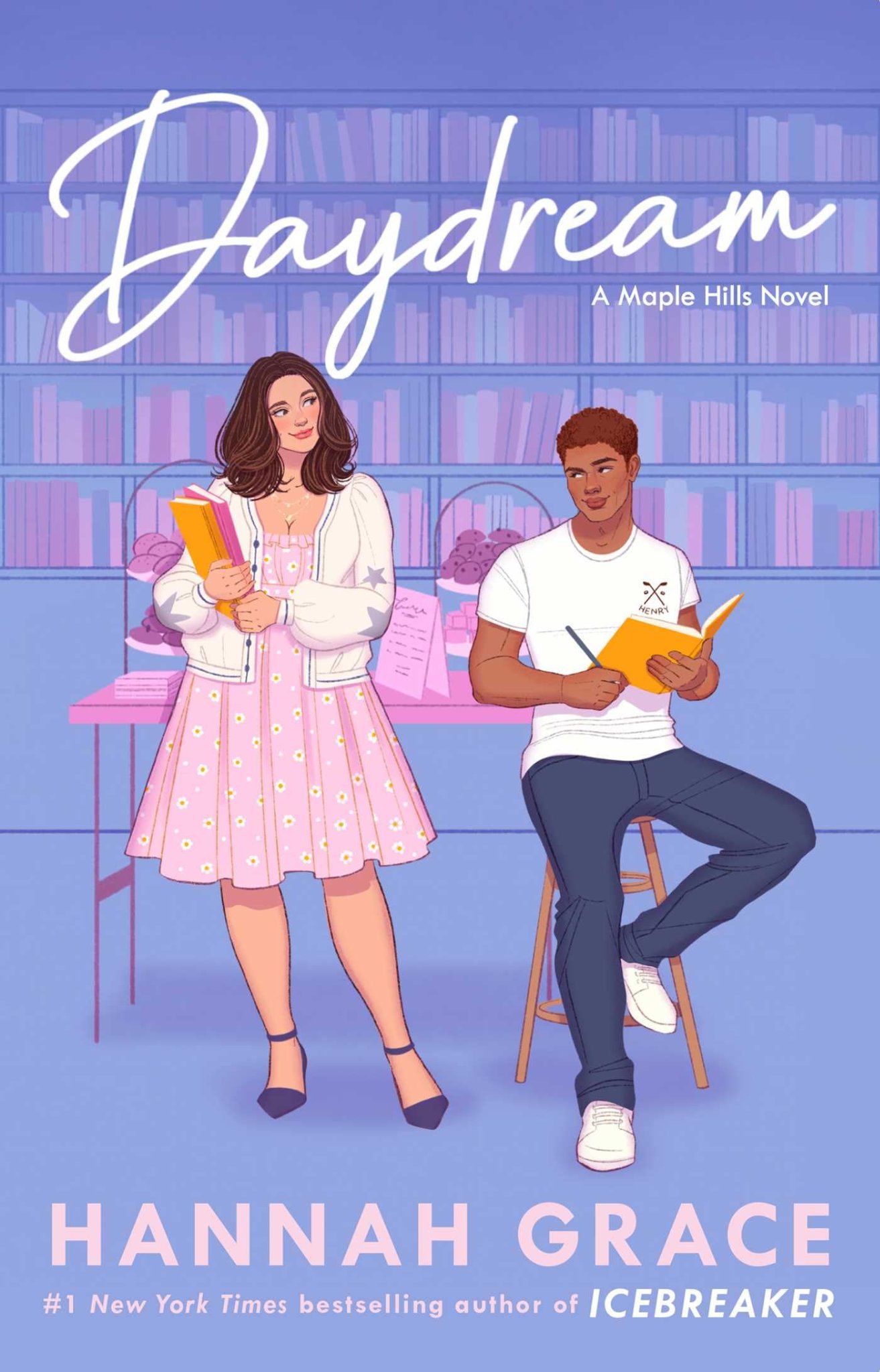
Reading Medium: Physical
Owned vs. Borrowed: Borrowed from library
Official Synopsis: When his procrastination lands him in a difficult class with his least favorite professor, Henry Turner knows he’s going to have to work extra hard to survive his junior year of college. And now with his new title of captain for the hockey team — which he didn’t even want — Henry absolutely cannot fail. Enter Halle Jacobs, a fellow junior who finds herself befriended by Henry when he accidentally crashes her book club.
Halle may not have the romantic pursuits of her favorite fictional leads, but she’s an academic superstar, and as soon as she hears about Henry’s problems with his class reading material, she offers to help. Too bad being a private tutor isn’t exactly ideal given her own studies, job, book club, and the novel she’s trying to write. But new experiences are the key to beating her writer’s block, and Henry’s promising to be the one to give them to her.
They just need to stick to their rule book. Oh, and not fall in love.
My Thoughts: Another D- read from Hannah Grace — there was definite improvement from Icebreaker, but still just meh overall.
This book was the definition of no plot, just vibes. It felt like reading a Pinterest board, it gave me the exact same low buzz of entertainment. There were some cute moments that made me grin and go “aw”, as well as some funny moments that made me chuckle, but they were few and far between.
The plot as a whole was EXTREMELY repetitive. It got to the point that I started skimming conversations because they were all the same. Every conversation between the main characters felt like a therapist’s textbook examples on what a healthy relationship should sound like. I was okay with it at first, but it quickly made the main relationship very robotic and bland. No organic chemistry in sight.
On top of that, the main characters (especially the main girl Halle) felt very one-note in even their personal conflicts — they had a problem, they worried about the problem, then the problem was resolved 2 pages later because they talked about it with someone. Rinse and repeat 100 times, and that was the entire book. Overall, the book could have been edited down to be maybe 100-200 pages shorter.
While this book wasn’t perfect, I’ll continue to hold some cautious optimism that Hannah Grace will possibly improve as a romance author.
My Rating: 2 / 5
The Women by Kristin Hannah
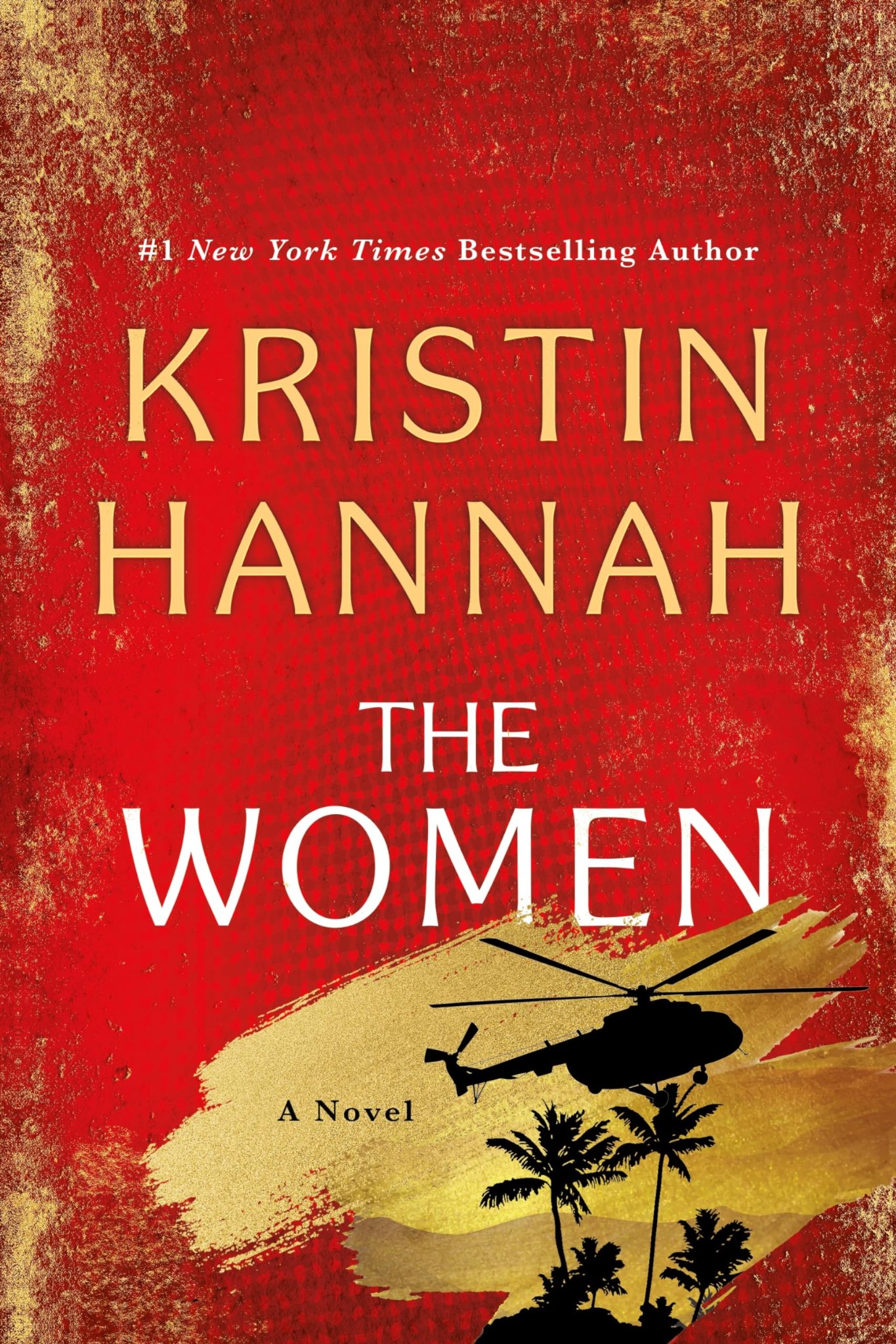
Reading Medium: Physical
Owned vs. Borrowed: Borrowed from Mom
Official Synopsis: Women can be heroes. When twenty-year-old nursing student Frances “Frankie” McGrath hears these words, it is a revelation. Raised in the sun-drenched, idyllic world of Southern California and sheltered by her conservative parents, she has always prided herself on doing the right thing. But in 1965, the world is changing, and she suddenly dares to imagine a different future for herself. When her brother ships out to serve in Vietnam, she joins the Army Nurse Corps and follows his path.
As green and inexperienced as the men sent to Vietnam to fight, Frankie is over-whelmed by the chaos and destruction of war. Each day is a gamble of life and death, hope and betrayal; friendships run deep and can be shattered in an instant. In war, she meets — and becomes one of — the lucky, the brave, the broken, and the lost.
But war is just the beginning for Frankie and her veteran friends. The real battle lies in coming home to a changed and divided America, to angry protesters, and to a country that wants to forget Vietnam.
My Thoughts: This was my first Kristin Hannah book, and I must say, she lives up to the hype. This book was one of my favourite historical fictions that I read this year.
Extremely well-written, even mundane scenes felt vivid and lively. Kristin Hannah just has a way of writing that hits you hard, it’s powerful and harrowing and just so well done. I really enjoyed the overall pacing of the story too, it felt like I was flying through this woman’s life, and I’ve always loved stories that follow a character’s entire life.
I liked the main character Frankie, and her story of growing from her naive and sheltered life. I also loved how Frankie’s friends were written throughout the story — they had very distinct personalities and lives of their own, and I really loved how their friendships were written, during and after the war. They were always there for each other, and it warmed my heart to read.
I think my only gripe with this book was that I didn’t really like Frankie’s love interests, or the fact that every boy Frankie met was inexplicably deeply in love with her out of the blue. It felt a little Mary Sue, but perhaps it was further commentary on how women were treated while working on the warfront.
While the storylines, especially the romantic subplots, were a little predictable — I thoroughly enjoyed this read. I’d recommend this to anyone looking to dip their toe into historical fiction.
My Rating: 4.5 / 5
Bad Men by Julie Mae Cohen
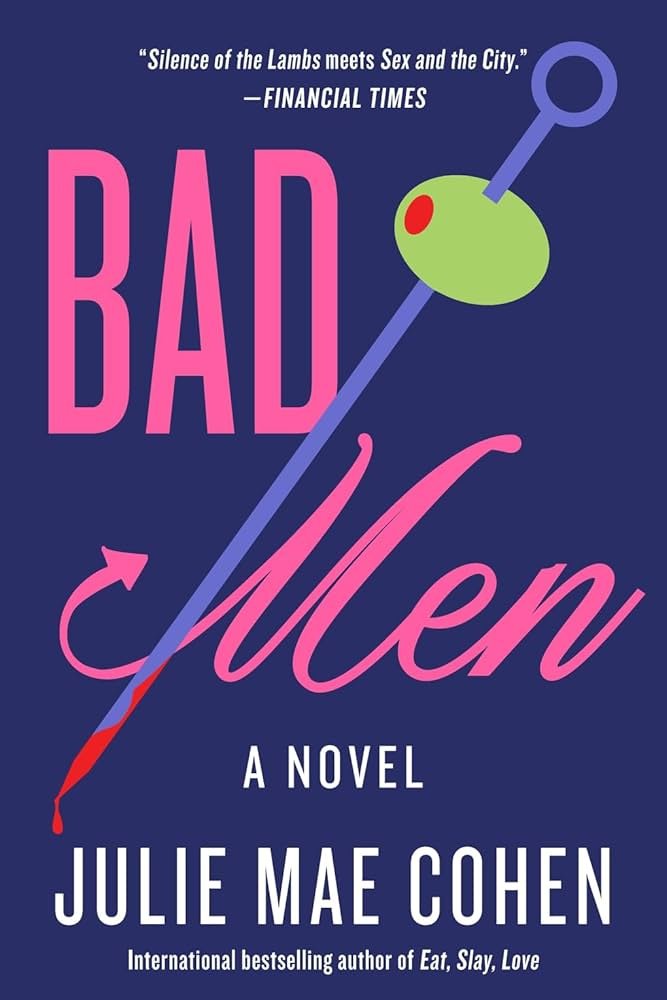
Reading Medium: Physical
Owned vs. Borrowed: Owned
Official Synopsis: Saffy Huntley-Oliver is an intelligent and glamorous socialite; she also happens to be a proficient serial killer. For the past fifteen years, she's hunted down and dispatched rapists, murderers, domestic abusers — bad men all. But leading a double life has left her lonely — dating’s tough when your boyfriend might turn out to be your next victim. Saffy thinks she's finally found a truly good man in Jonathan Desrosiers, a true-crime podcaster who’s amassed legions of die-hard fans for cracking cold cases and bringing justice to victims.
When a decapitated body shows up on Jon's doorstep the morning after his wife leaves him, he becomes the chief suspect for a murder he insists he didn’t commit. Saffy’s crush becomes an obsession as she orchestrates a meet-cute and volunteers to help Jon clear his name, using every trick up her sleeve to find the real killer and get her man — no matter the cost.
My Thoughts: Meh, this book was just alright. I was intrigued by the premise, but the plot was very predictable. I will admit, however, that the writing was just the right level of entertaining that it kept me engaged enough to finish the book.
Every character in this book was pretty cliche, and the “romance” felt incredibly forced. The plot demands romance to happen here, so thus it must happen! Who cares about building chemistry!
As I said, I liked the idea of a “Joe Goldberg from YOU” -esque female serial killer who targets who she considers “bad men”. Like Joe Goldberg, I was intrigued to read her internal thoughts and narration, and how she would justify the murders to herself and potentially others. So why couldn’t the book have focused on that?! Why was the majority of this “feminist” story told from the MMC’s perspective with a predictable whodunnit plot?
I was very much not a fan of the book’s dual narrative between Saffy (our female serial killer with a dumb nickname) and Jonathan (melba toast MMC). I think the book would have actually been much better if we were stuck in Saffy’s head like we were in Joe Goldberg’s head in YOU — we would have been able to get a clearer and deeper picture of Saffy’s character instead of the femme fatale bullshit we saw through Jonathan’s perspective.
A good premise unfortunately victimized by underwhelming execution.
My Rating: 3 / 5
Murder Your Employer: The McMasters Guide to Homicide by Rupert Holmes
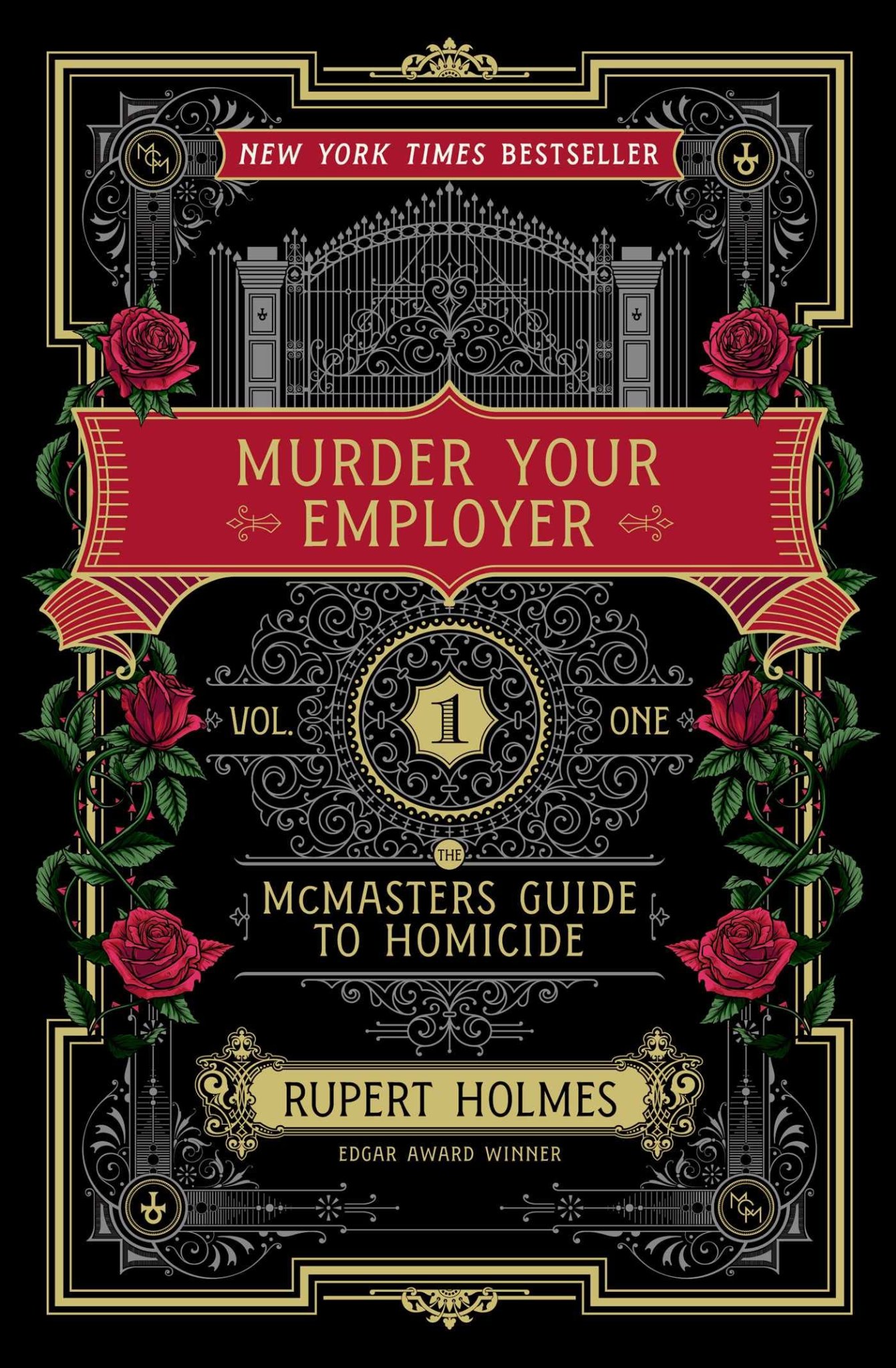
Reading Medium: Physical
Owned vs. Borrowed: Owned
Official Synopsis: Who hasn’t wondered for a split second what the world would be like if a person who is the object of your affliction ceased to exist? But then you’ve probably never heard of The McMasters Conservatory, dedicated to the consummate execution of the homicidal arts. To gain admission, a student must have an ethical reason for erasing someone who deeply deserves a fate no worse (nor better) than death. The campus of this “Poison Ivy League” college — its location unknown to even those who study there — is where you might find yourself the practice target of a classmate… and where one’s mandatory graduation thesis is getting away with the perfect murder of someone whose death will make the world a much better place to live.
My Thoughts: Oh, how I adored this book, I feel like I devoured it in one sitting. Such a wonderfully unique and clever and witty story — I was genuinely impressed by how much thought was put into every little detail.
Rupert Holmes is an incredible writer. Famous for penning the famous Piña Colada song (isn’t that wild?!) — I was a big fan of Holmes’ hilarious “dry British humour” style of writing. Ratfic fans, I feel like you’d enjoy this one, considering how clever I found every single character and their actions. I tip my cap to you, Mr. Holmes!
When I finished this book, I was immediately itching to either read its sequel (release date TBD) or just read it from the start again. That’s when you know you’ve found a banger.
I highly recommend this one to anyone who reads.
My Rating: 5 / 5
Great Big Beautiful Life by Emily Henry
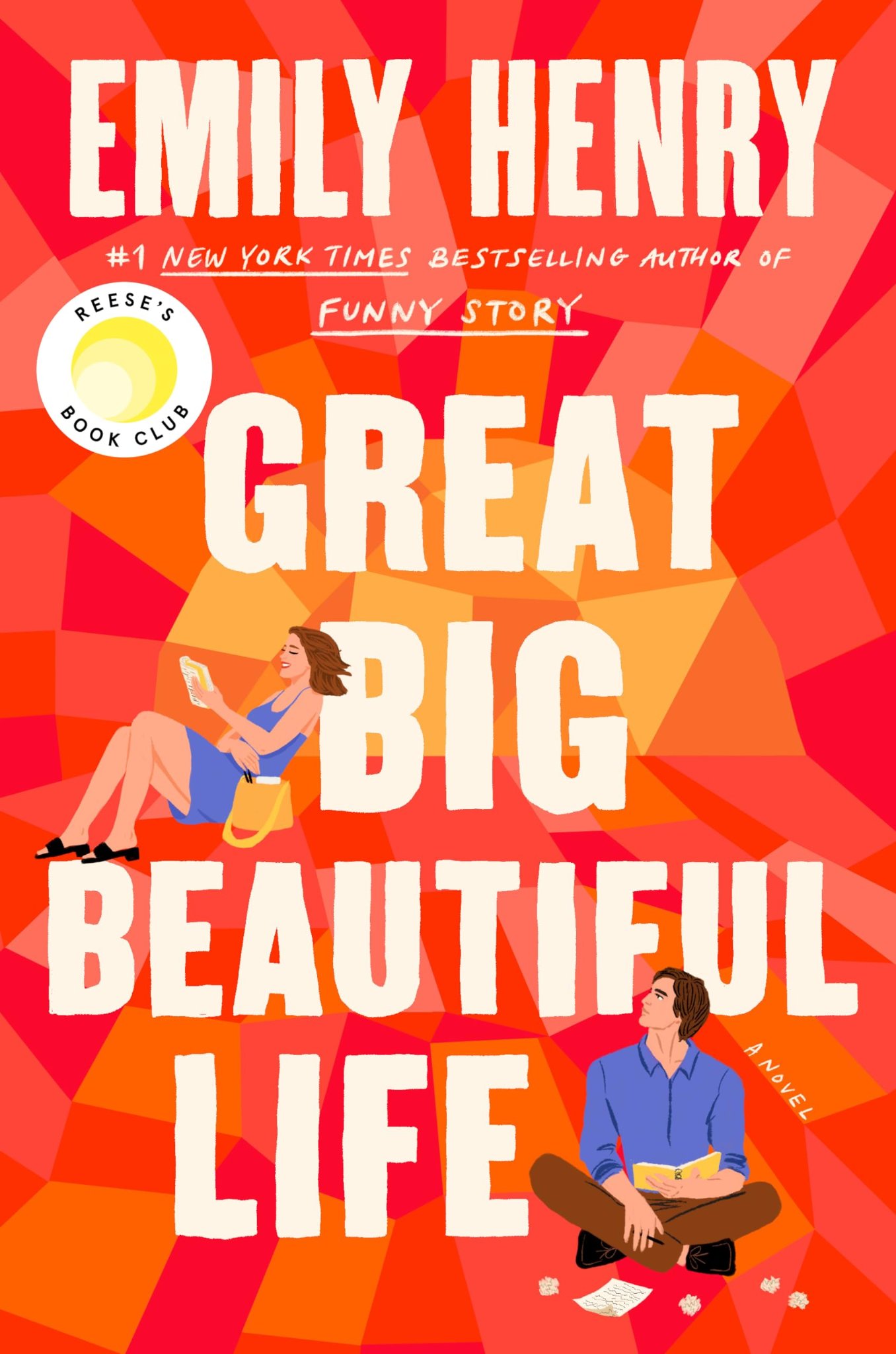
Reading Medium: Physical
Owned vs. Borrowed: Owned
Official Synopsis: Alice Scott is an eternal optimist still dreaming of her big writing break. Hayden Anderson is a Pulitzer-prize winning human thundercloud. And they’re both on balmy Little Crescent Island for the same reason: To write the biography of a woman no one has seen in years — or at least to meet with the octogenarian who claims to be the Margaret Ives. Tragic heiress, former tabloid princess, and daughter of one of the most storied (and scandalous) families of the 20th Century.
When Margaret invites them both for a one-month trial period, after which she’ll choose the person who’ll tell her story, there are three things keeping Alice’s head in the game.
One: Alice genuinely likes people, which means people usually like Alice — and she has a whole month to win the legendary woman over.
Two: She’s ready for this job and the chance to impress her perennially unimpressed family with a Serious Publication.
Three: Hayden Anderson, who should have no reason to be concerned about losing this book, is glowering at her in a shaken-to-the core way that suggests he sees her as competition.
But the problem is, Margaret is only giving each of them pieces of her story. Pieces they can’t swap to put together because of an ironclad NDA and an inconvenient yearning pulsing between them every time they’re in the same room. And it’s becoming abundantly clear that their story — just like the tale Margaret’s spinning — could be a mystery, tragedy, or love ballad… depending on who’s telling it.
My Thoughts: Oh Emily Henry, how I love thee. I digress, I don’t think this book is one of her best. But I loved it all the same. While there were a few things I felt neutral about/mildly disliked, let's talk about what I loved first.
I loved the character of Margaret Ives and the Ives family storyline. I’m a big sucker for stories surrounding the trials and tribulations of fame, especially in old Hollywood, so the story of Margaret Ives was right up my alley. Even though I haven’t read either book yet (perhaps they’ll appear in a future Reading Round-Up soon) — I got the same vibes as Evelyn Hugo/Daisy Jones and the Six with this deep-dive into 20th century salacious fame.
I am, as if it wasn’t already clear, a big fan of Emily Henry’s god-tier writing. I love how she makes her settings feel cozy and alive, I felt like I was right there in that coastal town. I was also a big fan of Alice as a main character — I liked how Emily Henry wrote her as an optimistic and cheery character, without coming off as naive or annoying. I also greatly appreciated how her somewhat-strained relationship with her mom was written, I felt like that sub-plot was written so well.
While I did not love Hayden and Alice’s insta-love beginning, I did enjoy their romance in the second half. I just wish it had burned a bit more slowly, and that we saw them become friends first. I wanted to see them like each other before diving into loving each other, having “oh I like this person” in between “who is this stranger” and “I love this person with my entire being”. Another small critique I have for this book is that I wish we got a bit more of Margaret and her husband Cosmo’s life together — they were supposedly this grand Hollywood love story, but it felt somewhat skimmed through.
Despite these small critiques, I am eager to re-read this one already.
My Rating: 4.5 / 5
Deep End by Ali Hazelwood
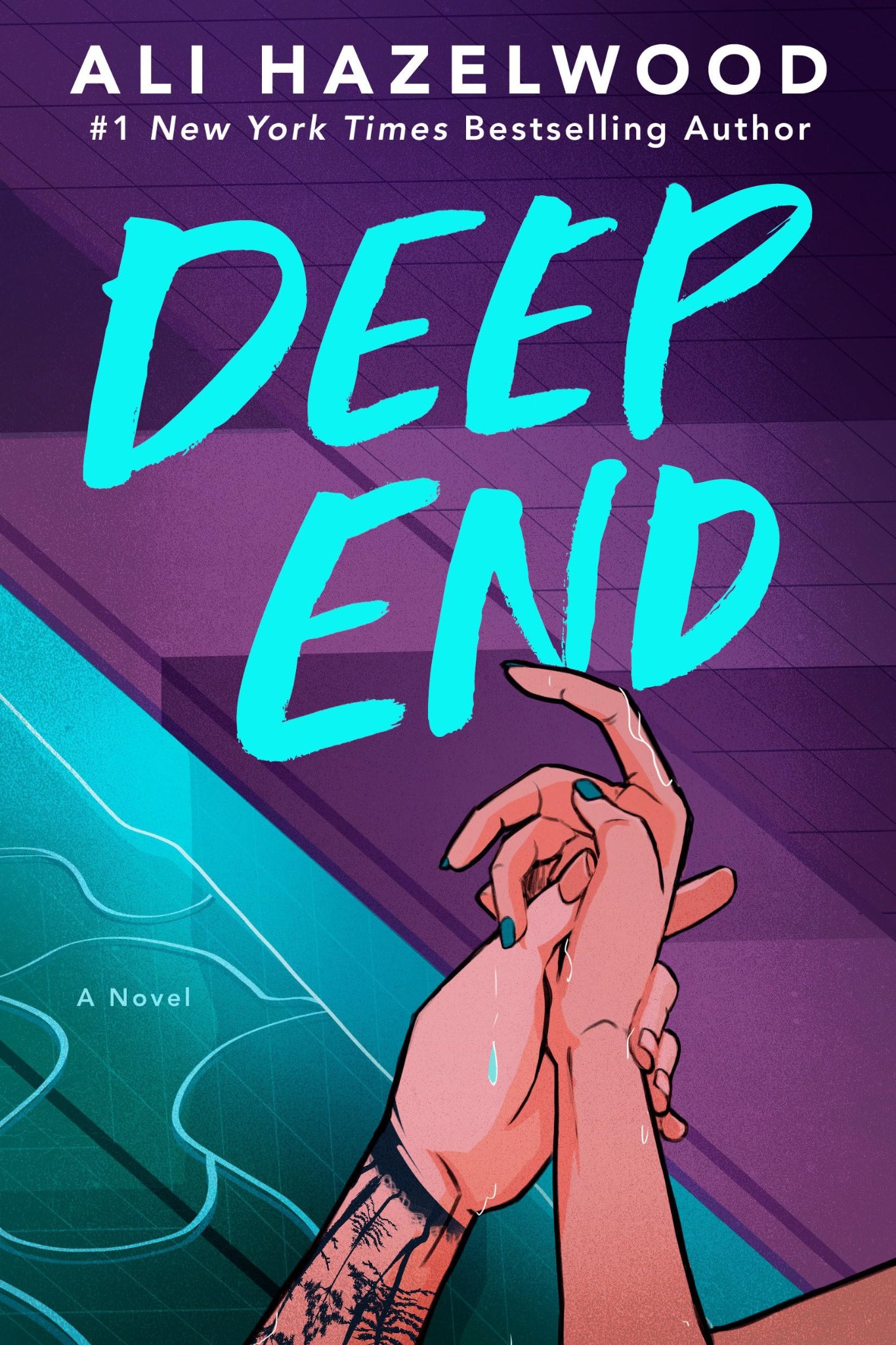
Reading Medium: Physical
Owned vs. Borrowed: Borrowed from library
Official Synopsis: Scarlett Vandermeer is swimming upstream. A Junior at Stanford and a student-athlete who specializes in platform diving, Scarlett prefers to keep her head down, concentrating on getting into med school and on recovering from the injury that almost ended her career. She has no time for relationships — at least, that’s what she tells herself.
Swim captain, world champion, all-around aquatics golden boy, Lukas Blomqvist thrives on discipline. It’s how he wins gold medals and breaks records: complete focus, with every stroke. On the surface, Lukas and Scarlett have nothing in common. Until a well-guarded secret slips out, and everything changes.
So they start an arrangement. And as the pressure leading to the Olympics heats up, so does their relationship. It was supposed to be just a temporary, mutually satisfying fling. But when staying away from Lukas becomes impossible, Scarlett realizes that her heart might be treading into dangerous water...
My Thoughts: Am I high or something? Why are my most hated authors from my last Reading Round-Up not being so hateable with their newer books?
I must speak the truth: I think this book is Ali Hazelwood’s best yet. It’s marginally better than all of her other books I have read thus far.
Funny enough, I think the fact that BDSM was a main theme in this book actually helped the overall plot. There were no annoying miscommunications or unnecessary third act shenanigans, and the main characters actually spoke to each other instead of dumbly seething. I liked how no-nonsense Lukas was as a love interest, and I’ll admit… he had me blushin’.
Scarlett at times was a bit of an annoying character to read with her doormat personality, and there were still so… so many cringy millenial/2013 tumblr jokes. The main plotline was also extremely predictable with the way Penelope, Scarlett’s best friend-turned-main antagonist, kept pushing them together than got mad when… they got together? Because she was jealous after setting up her best friend and ex who she broke up with? Ugh, Penelope was the most annoying character. I don’t know how they forgave her so quickly after she made Scarlett miss receiving her first gold medal with her shenanigans.
The smut had some cringy lines, like Ali Hazelwood’s smut scenes always do, but I admit… they were better, probably her best, when compared to her previous ones. Again, I think the inherent importance of communication in BDSM actually helped her write a better romance.
If you were ever intrigued to read an Ali Hazelwood book, this one would probably be your best bet.
My Rating: 3 / 5
Julie Chan Is Dead by Liann Zhang
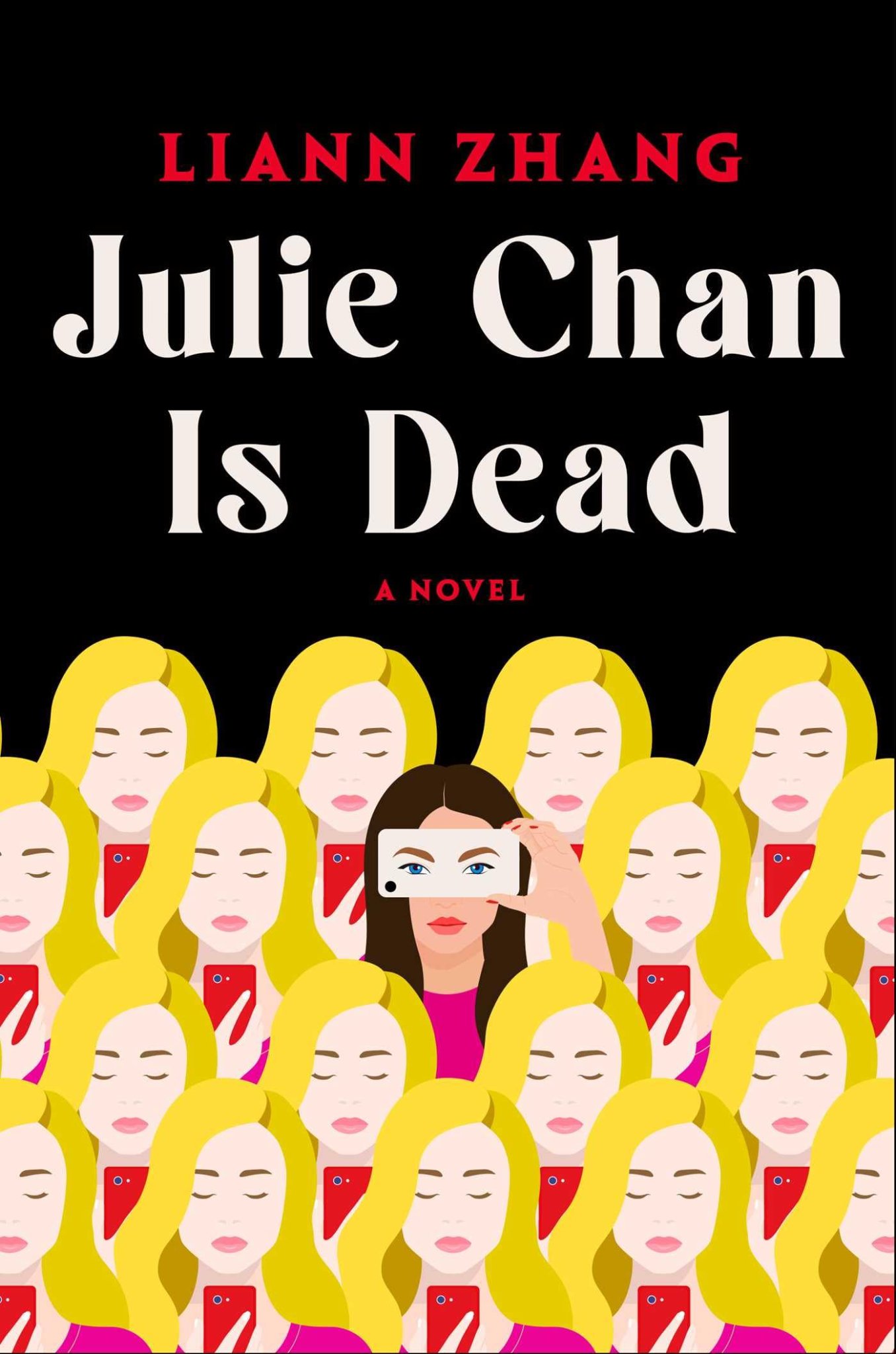
Reading Medium: Physical
Owned vs. Borrowed: Owned
Official Synopsis: Julie Chan has nothing. Her twin sister has everything. Except a pulse.
Julie Chan, a supermarket cashier with nothing to lose, finds herself thrust into the glamorous yet perilous world of her late twin sister, Chloe VanHuusen, a popular influencer. Separated at a young age, the identical twins were polar opposites and rarely spoke, except for one viral video that Chloe initiated (Finding My Long-Lost Twin And Buying Her A House #EMOTIONAL). When Julie discovers Chloe’s lifeless body under mysterious circumstances, she seizes the chance to live the life she’s always envied.
Transforming into Chloe is easier than expected. Julie effortlessly adopts Chloe’s luxurious influencer life, complete with designer clothes, a meticulous skincare routine, and millions of adoring followers. However, Julie soon realizes that Chloe’s seemingly picture-perfect life was anything but.
Haunted by Chloe’s untimely death and struggling to fit into the privileged influencer circle, Julie faces mounting challenges during a weeklong island retreat with Chloe’s exclusive group of influencer friends. As events spiral out of control, Julie uncovers the sinister forces that may have led to her sister’s demise and realizes she might be the next target.
My Thoughts: A debut novel by a Canadian author, I was very excited to pick this one up. This book is the ultimate reading slump killer — it’s well-written with an incredibly fast-paced story. It was honestly such an addictive read, I couldn’t put it down. The premise was intriguing, and it felt well-executed. The writing was incredible — so good to the point that one scene (the mouse scene, for people who have read it…) actually made me gag and feel genuinely nauseous. I had to pause my reading and sip some water to make the nausea pass, so I could keep reading it. That’s how good it was.
Yes, some characters were a tiny bit flat, but I’ll forgive that for the fact that the story never bored me once.
I would go into more details of what I enjoyed about this book, but I don’t want to completely spoil it. Just trust me, it was such a fun, non-serious, good read.
If you’re looking for a goofy and good dark mystery à la Jennifer’s Body, I highly recommend this one.
My Rating: 4.5 / 5
Atmosphere by Taylor Jenkins Reid
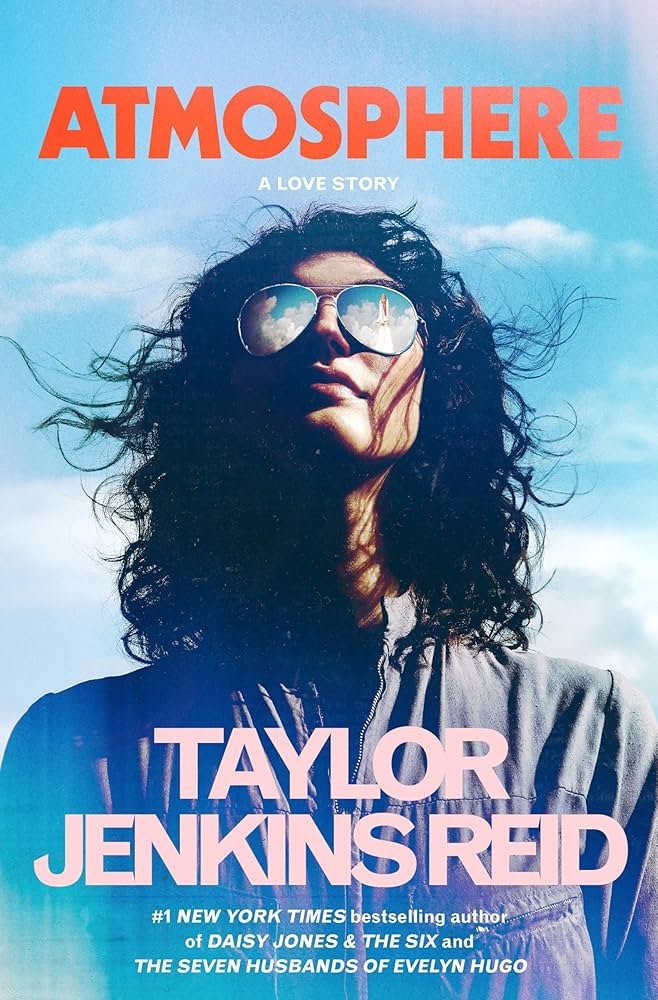
Reading Medium: Physical
Owned vs. Borrowed: Owned
Official Synopsis: Joan Goodwin has been obsessed with the stars for as long as she can remember. Thoughtful and reserved, Joan is content with her life as a professor of physics and astronomy at Rice University and as aunt to her precocious niece, Frances. That is, until she comes across an advertisement seeking the first women scientists to join NASA’s space shuttle program. Suddenly, Joan burns to be one of the few people to go to space.
Selected from a pool of thousands of applicants in the summer of 1980, Joan begins training at Houston’s Johnson Space Center, alongside an exceptional group of fellow candidates: Top Gun pilot Hank Redmond and scientist John Griffin, who are kind and easygoing even when the stakes are highest; mission specialist Lydia Danes, who has worked too hard to play nice; warmhearted Donna Fitzgerald, who is navigating her own secrets; and Vanessa Ford, the magnetic and mysterious aeronautical engineer, who can fix any engine and fly any plane.
As the new astronauts become unlikely friends and prepare for their first flights, Joan finds a passion and a love she never imagined. In this new light, Joan begins to question everything she thinks she knows about her place in the observable universe.
Then, in December of 1984, on mission STS-LR9, it all changes in an instant.
My Thoughts: This was my first Taylor Jenkins Reid book, and I am incredibly eager to read more. This book was amazing.
Great, snappy writing and realistic, well-written characters. I loved Joan and Vanessa’s characters as well as their romance. They had all the staples of a good romance — pining, grand romantic love confessions, and reflections on how being in love changes you. I loved reading about their lives individually and together.
Overall, I loved how the “love story” described in the title ended up being more than a romantic story. The book was filled with stories of platonic love, familial love, and romantic love in Joan’s life — and they were all told so beautifully.
While some part in the middle could have been trimmed down (like the scene where they have a looong “do you believe in God” conversation) — this book was a really good read.
My Rating: 4.5 / 5
Problematic Summer Romance by Ali Hazelwood
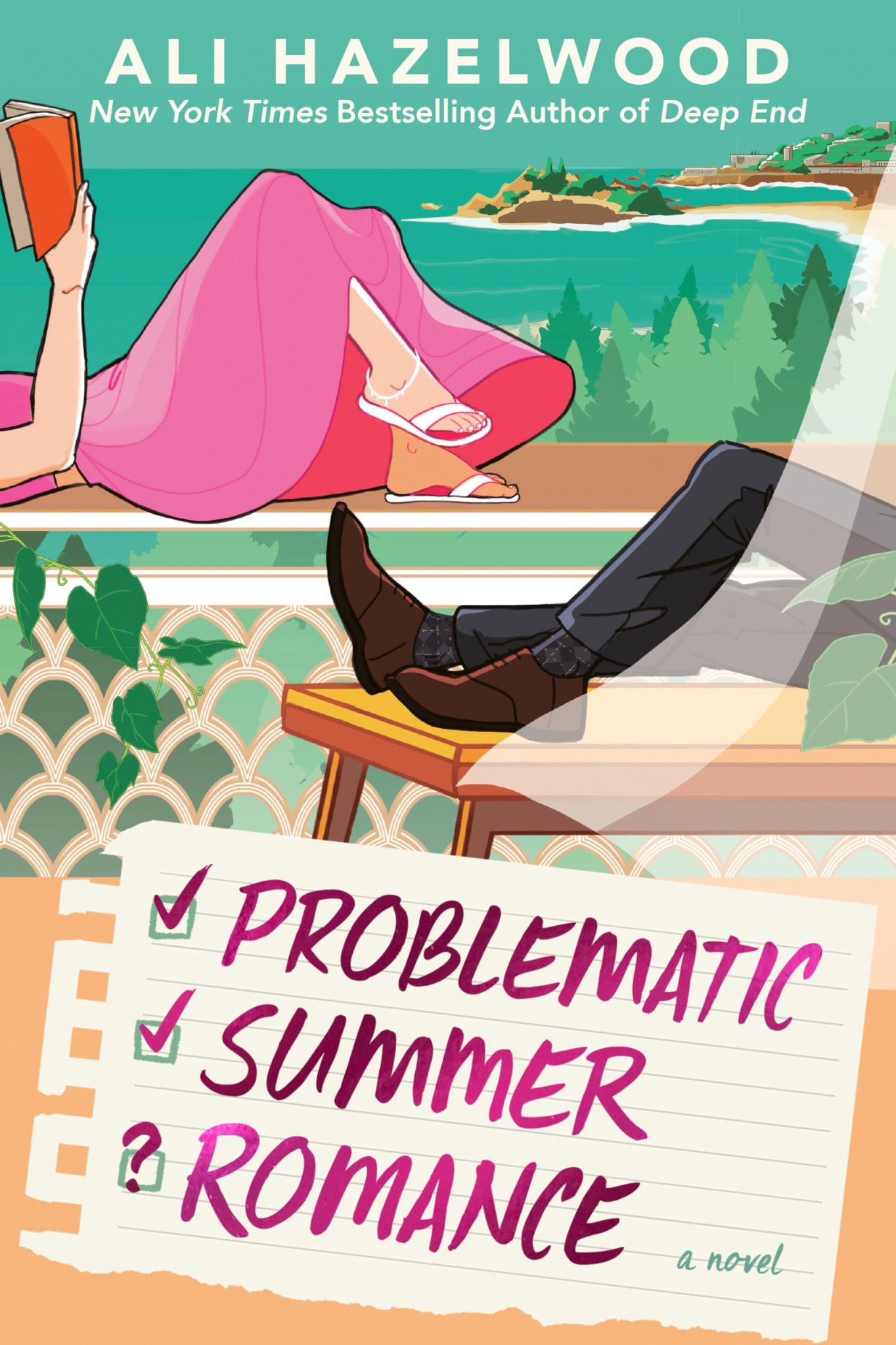
Reading Medium: Physical
Owned vs. Borrowed: Borrowed from my friend Olivia
Official Synopsis: Maya Killgore is twenty-three and still in the process of figuring out her life. Conor Harkness is thirty-eight, and Maya cannot stop thinking about him.
It’s such a cliché, it almost makes her heart implode: older man and younger woman; successful biotech guy and struggling grad student; brother’s best friend and the girl he never even knew existed. As Conor loves to remind her, the power dynamic is too imbalanced. Any relationship between them would be problematic in too many ways to count, and Maya should just get over him. After all, he has made it clear that he wants her gone from his life.
But not everything is as it seems — and clichés sometimes become plot twists.
When Maya’s brother decides to get married in Taormina, she and Conor end up stuck together in a romantic Sicilian villa for over a week. There, on the beautiful Ionian coast, between ancient ruins, delicious foods, and natural caves, Maya realizes that Conor might be hiding something from her. And as the destination wedding begins to erupt out of control, she decides that a summer fling might be just what she needs — even if it’s a problematic one.
My Thoughts: I read this book in like 2 days, Ali Hazelwood really is just romance crack cocaine. How is her writing style so addicting while her plotlines are so bland? I ended this book feeling very meh about it, but somehow I could not put it down while I was reading it?! The Ali Hazelwood effect is crazy.
I do think (perhaps wishful thinking) that Ali Hazelwood’s writing style is beginning to ever so slightly improve. She still has endless cringy millennial humour jokes peppered throughout her writing — there were some lines of dialogue in this one that made me say out loud “no one talks like that!” — but there were also some lines that made me genuinely laugh. So, good for you, Ali Hazelwood.
I admit that this was a banger summer read, it was quick and fluffy and had the best fun Italian vacation vibes. Reading this on a beach would probably be peak. The main romance was also decent — I liked how it started, how their age gap was acknowledged and initially handled, but then it got so repetitive? Why are you suddenly both acting so immature about it, you’re both adults, just talk!
Despite that, I did somewhat enjoy reading this book. I loved the cameos of two other couples from Ali Hazelwood’s other books — I love when authors create their own little universes where all their characters live. On top of that, am I losing my mind or are Ali Hazelwood’s sex scenes getting better? I tip my cap to you, Miss Hazelwood.
My Rating: 2.5 / 5
If you have made it this far, thank you so much for reading my Reading Round-Up. I had a lot of fun writing this, I hope you had fun reading it :)
This has been Kaitlyn’s Reading Round-Up, signing off!











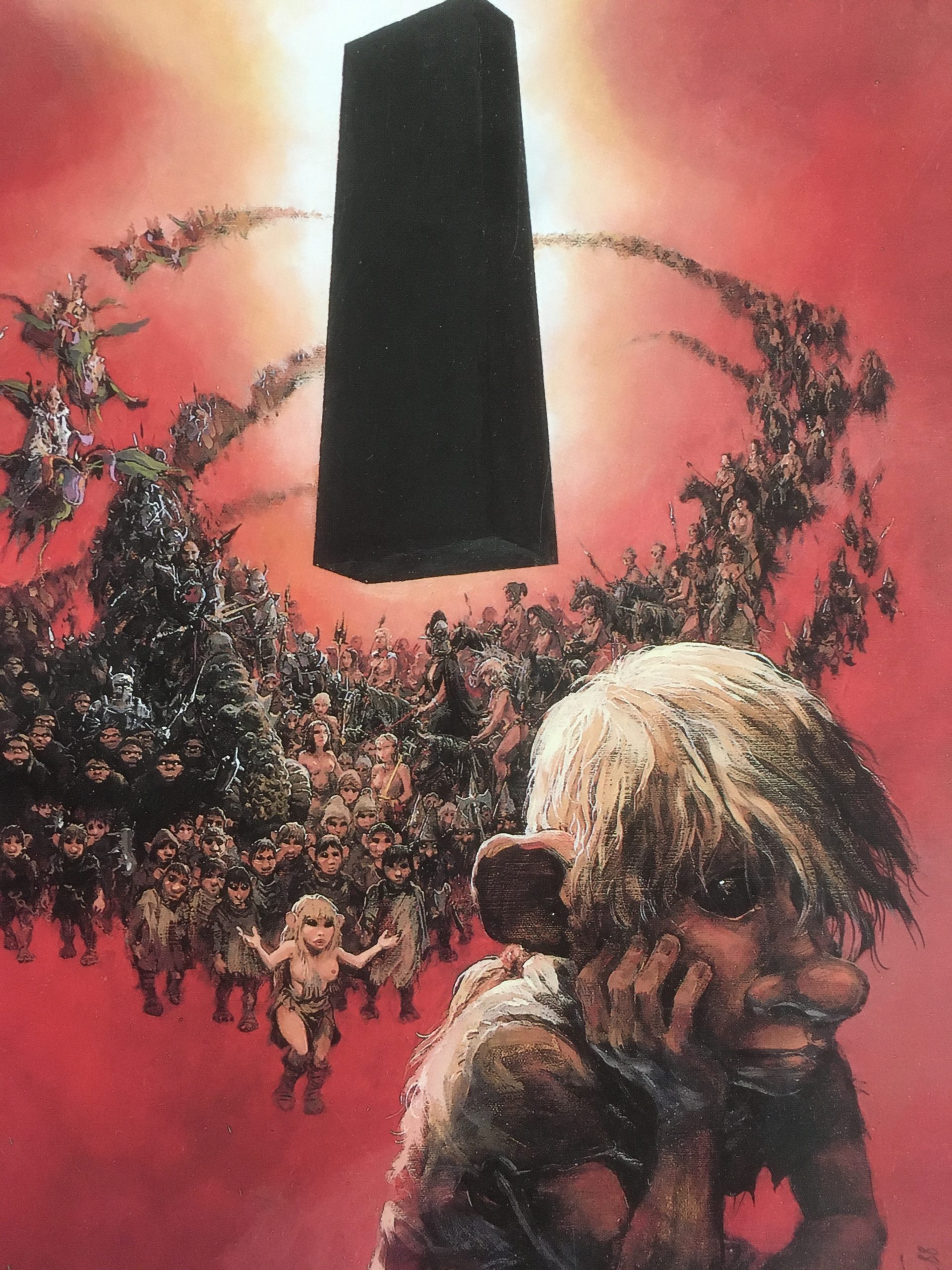
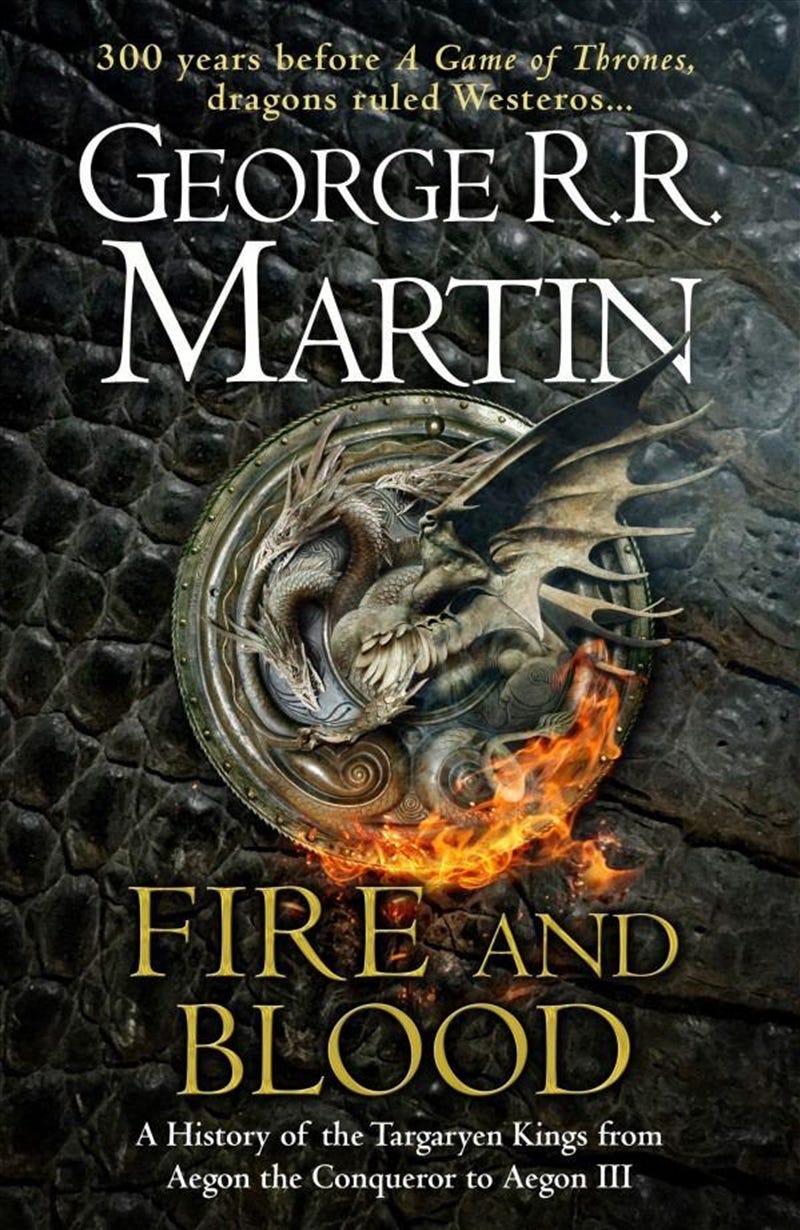












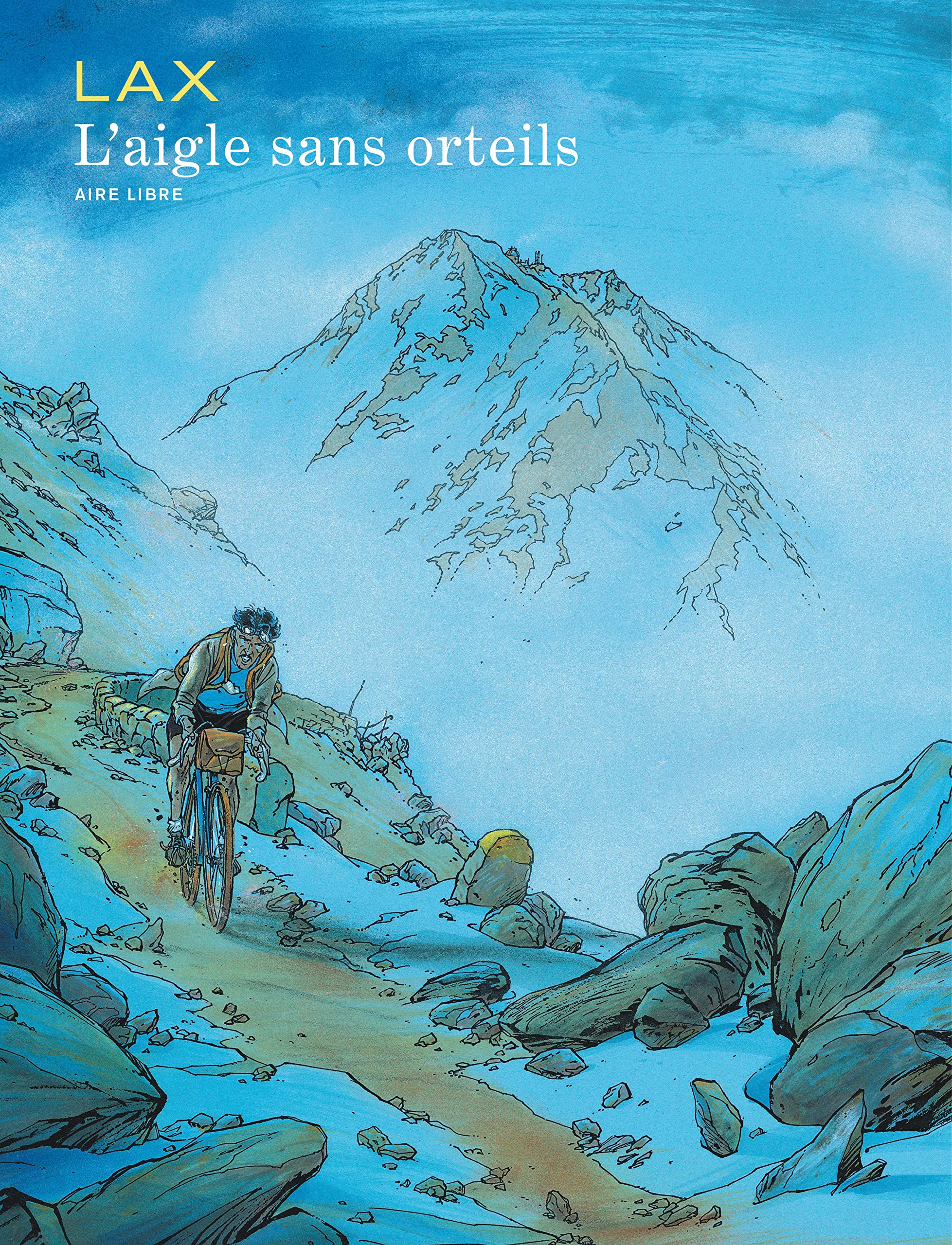













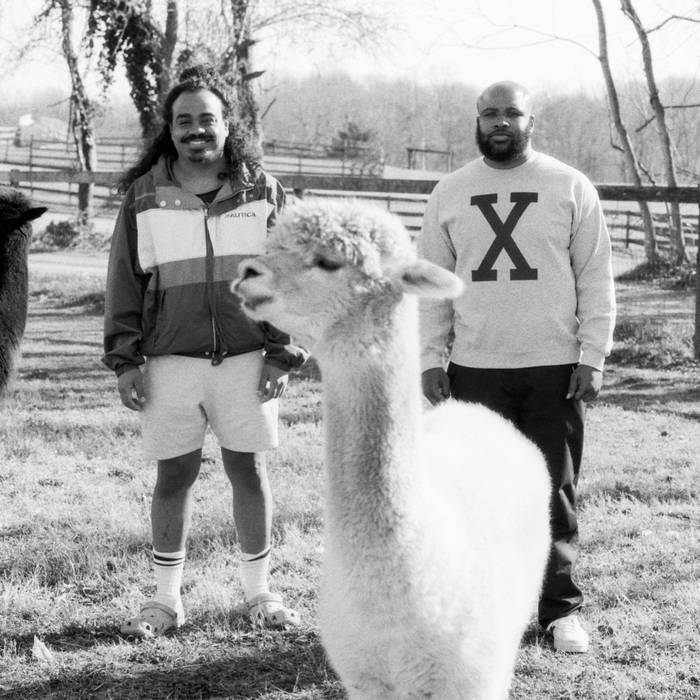








 Griselda / Detroit Rap
Griselda / Detroit Rap







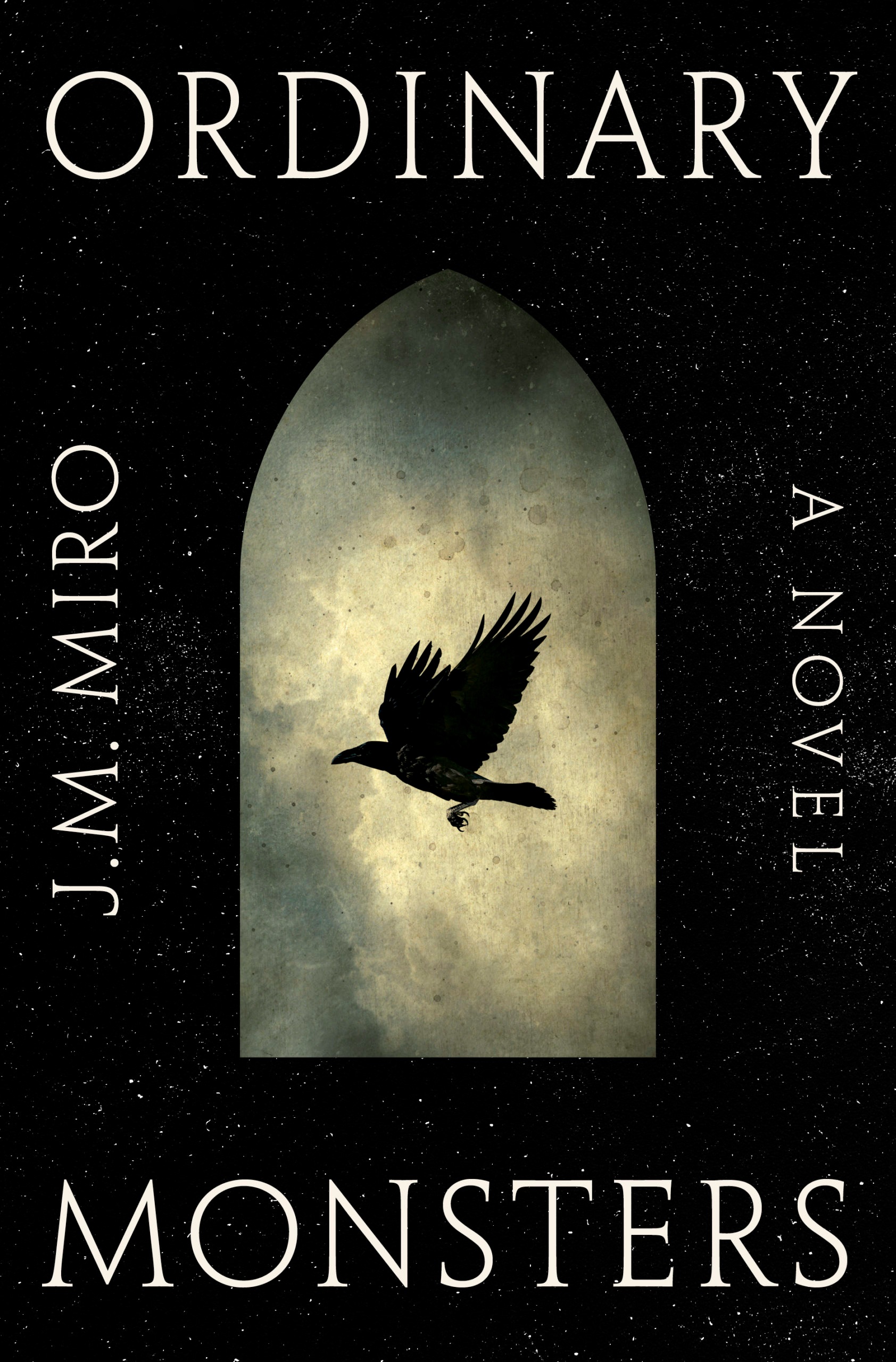







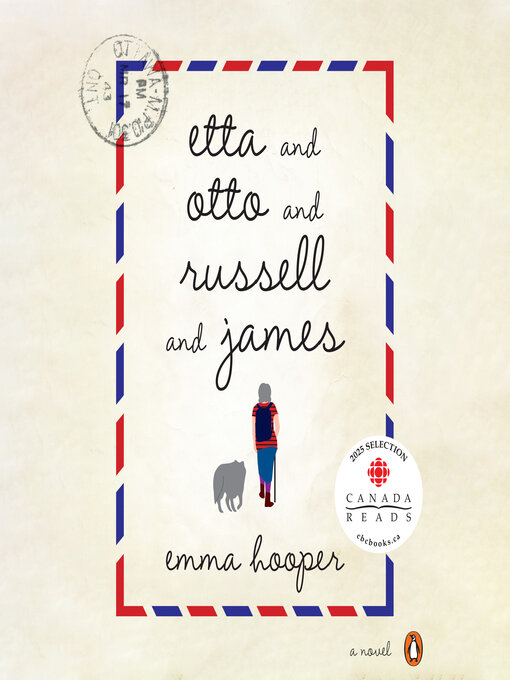
 front and back of a watch
front and back of a watch





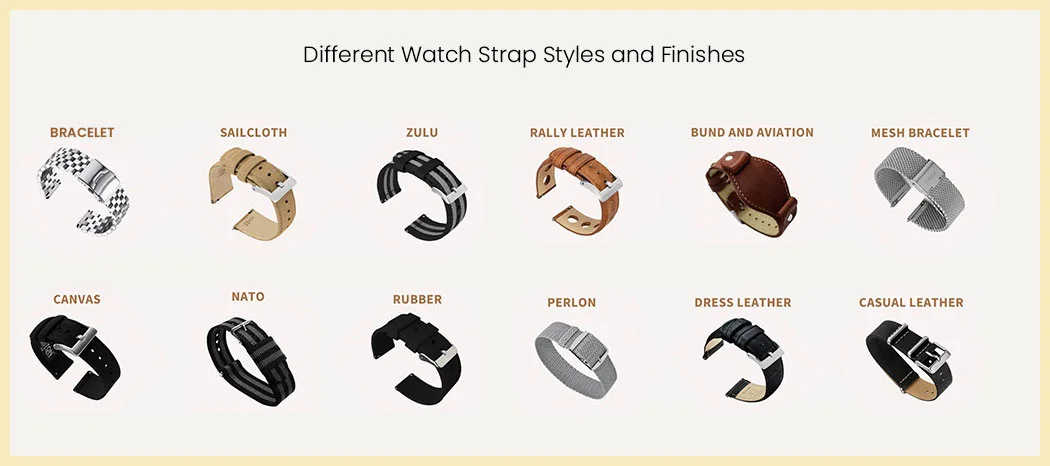

 constipated cat
constipated cat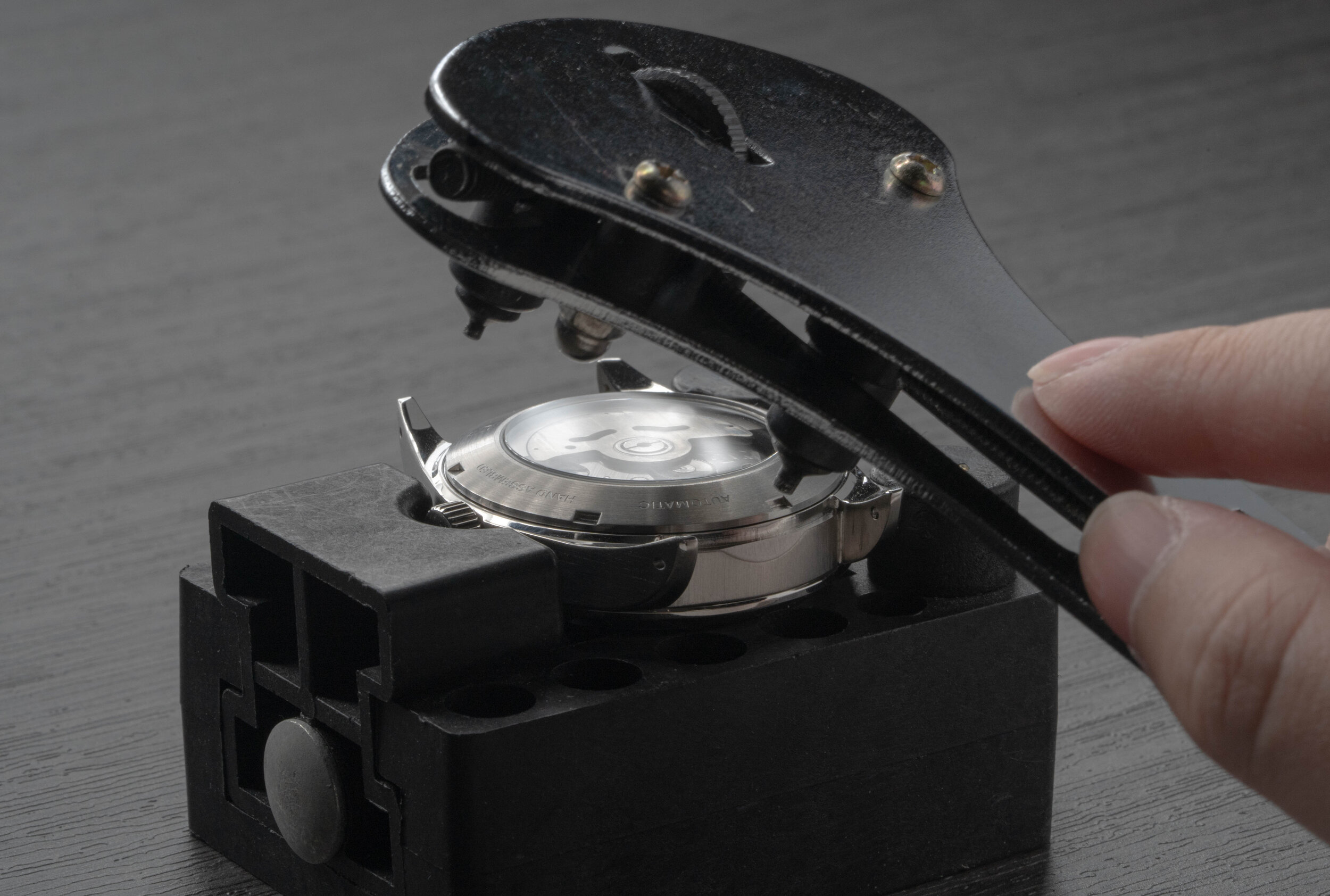 i had to put something here, I guess
i had to put something here, I guess
















